Contents
Karnak Temple | Introduction
The Karnak Temple is located in Luxor, and it is the largest ancient temple complex in the world, spanning over 2 square kilometers. The modern name "Karnak" originates from the Arabic word meaning "fortified village," but in ancient Egypt, it was known as "Ipet-Sut," meaning "The Most Selected of Places."
The design and construction of the Karnak Temple spanned multiple centuries, beginning around 2000 BCE during the Middle Kingdom period, primarily dedicated to the sun god Amun-Ra. Successive pharaohs left their marks on this sacred site, continuing construction until the Ptolemaic period. During the New Kingdom era, pharaohs like Thutmose I, Ramses II, and Hatshepsut led nearly 1,500 years of expansions, shaping it into a grand complex that became the center of both ancient Egyptian religion and politics.
🧳 A full travel resource kit for this topic is currently in the works.
It will include itinerary plans, recommended stays, custom maps, and useful tips.
Karnak Temple | Transportation
The Karnak Temple is located on Luxor's East Bank, in the northern part of the city, about 2 kilometers from Luxor Railway Station and the main Nile cruise docks. For independent travelers departing from central Luxor, it is even possible to walk there. However, given Egypt's hot climate, it is recommended to opt for a vehicle.
Taking a taxi or a horse-drawn carriage will take about 10–15 minutes. The cost can vary depending on negotiations, but it is generally affordable. Since there is no Uber in Luxor, if you’re traveling by cruise, the Karnak Temple is typically included in group tours, which is a convenient way to save transportation hassles. For independent travelers who prefer flexibility, the best option is to book a private car in advance, as most sightseeing in Luxor involves multiple destinations in one day. Booking transportation before arriving in Luxor can save time and avoid trouble.
Luxor private chartered car with tour guide
Luxor Charters
Nile Cruise from Aswan to Luxor
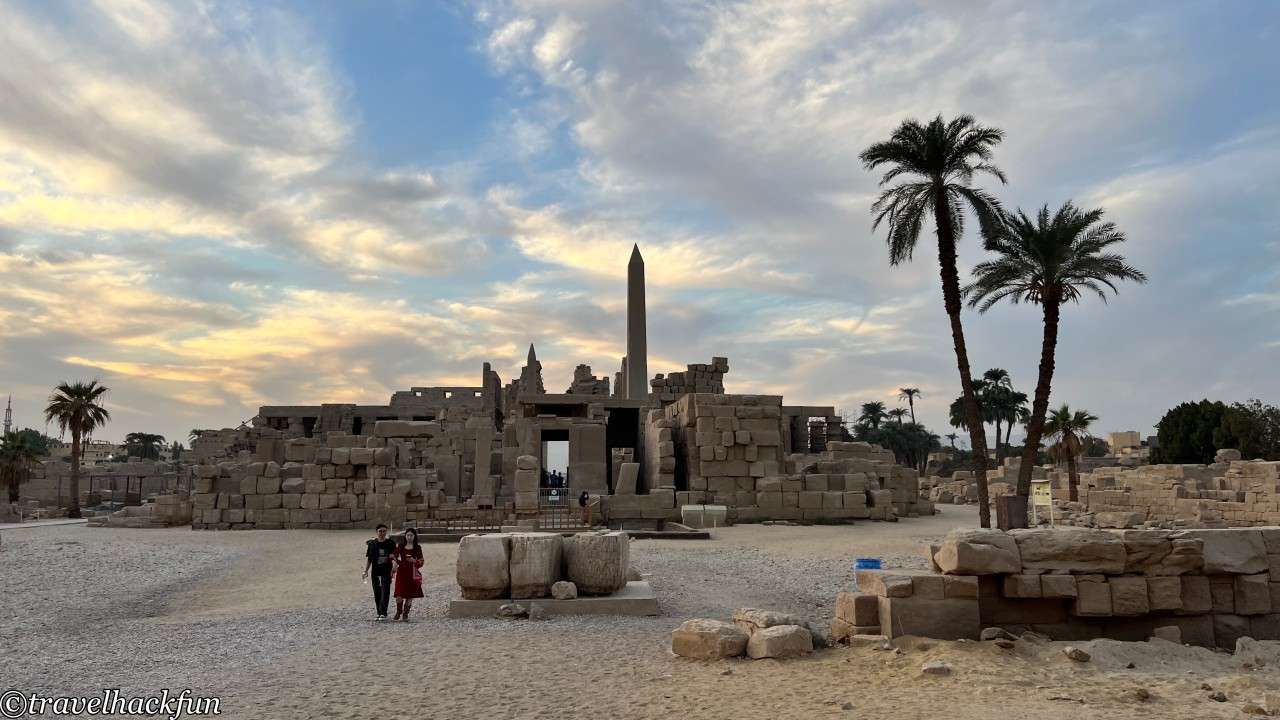
- Hotel search: Agoda
- Activities & tickets: KKday / Klook / TripAdvisor
- Travel credit cards (US only): My card picks + beginner tips
Karnak Temple | Itinerary Planning and Tickets
A visit to the Karnak Temple usually takes about half a day, making it an ideal main attraction for either the morning or afternoon. It is recommended to allocate at least 3–4 hours to fully explore the site. Given its vast size, focus on the following must-see areas: the First Pylon and Courtyard at the entrance, the Great Hypostyle Hall, the core of the Temple of Amun, the Open-Air Museum, and the Sacred Lake. If time allows, don’t miss the Avenue of Sphinxes that connects to the Luxor Temple.
Tickets for the Karnak Temple can be purchased directly from the Egyptian government’s website (Link). Foreign visitors must select the "Other Nationality" option. E-tickets are now available, saving you the time of standing in line.
Karnak Temple | Highlights
The Karnak Temple is a vast ancient architectural complex comprising multiple sections. Upon entering, the visitor center showcases a 3D model explaining the scale of the entire temple. Entering through the pylons leads to the core Temple of Amun, surrounded by the Sacred Lake, and the adjacent Temples of Khonsu and Mut, which together form the religious center for the worship of the Theban Triad. Theban Triad refers to the ancient city of Luxor (formerly Thebes), where the triad of gods includes Amun, his wife Mut, and their son Khonsu, the moon god.
A typical half-day visit includes entering through the First Pylon, followed by the First Courtyard, the Great Hypostyle Hall, the obelisks area, the Sacred Lake, and the scarab beetle statue. If time permits, you can extend the visit to nearby temples, such as the Temple of Khonsu or the Temple of Mut. For a detailed map, refer to this link.
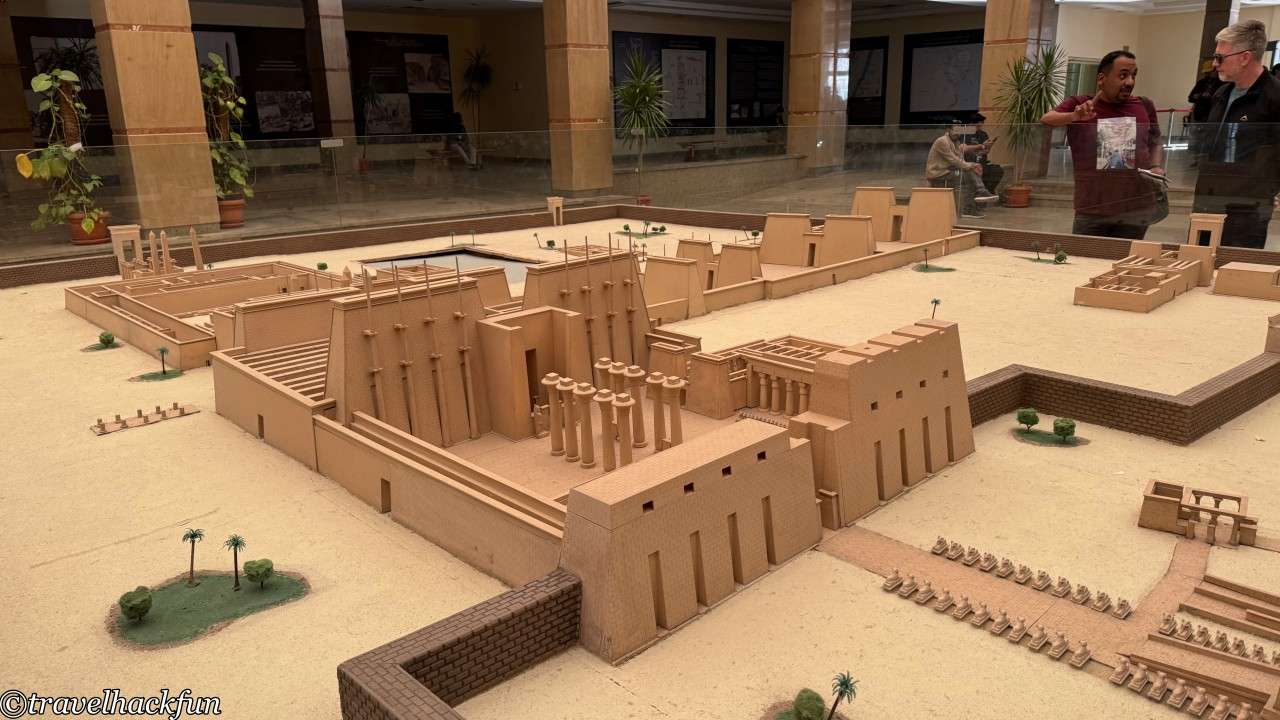
Avenue of Sphinxes
The grand entrance to the Karnak Temple is a majestic Avenue of Sphinxes, lined with hundreds of sphinx statues spaced approximately 4 meters apart. This 3-kilometer-long avenue originally connected Karnak Temple with Luxor Temple and is currently under restoration. There are two types of sphinx statues along the avenue: ram-headed sphinxes symbolizing the power of Amun, and human-headed sphinxes representing the pharaoh's majesty and protection.
During the annual Opet Festival in ancient Egypt, the statues of Amun, Mut, and Khonsu were paraded along this avenue from Karnak Temple to Luxor Temple.
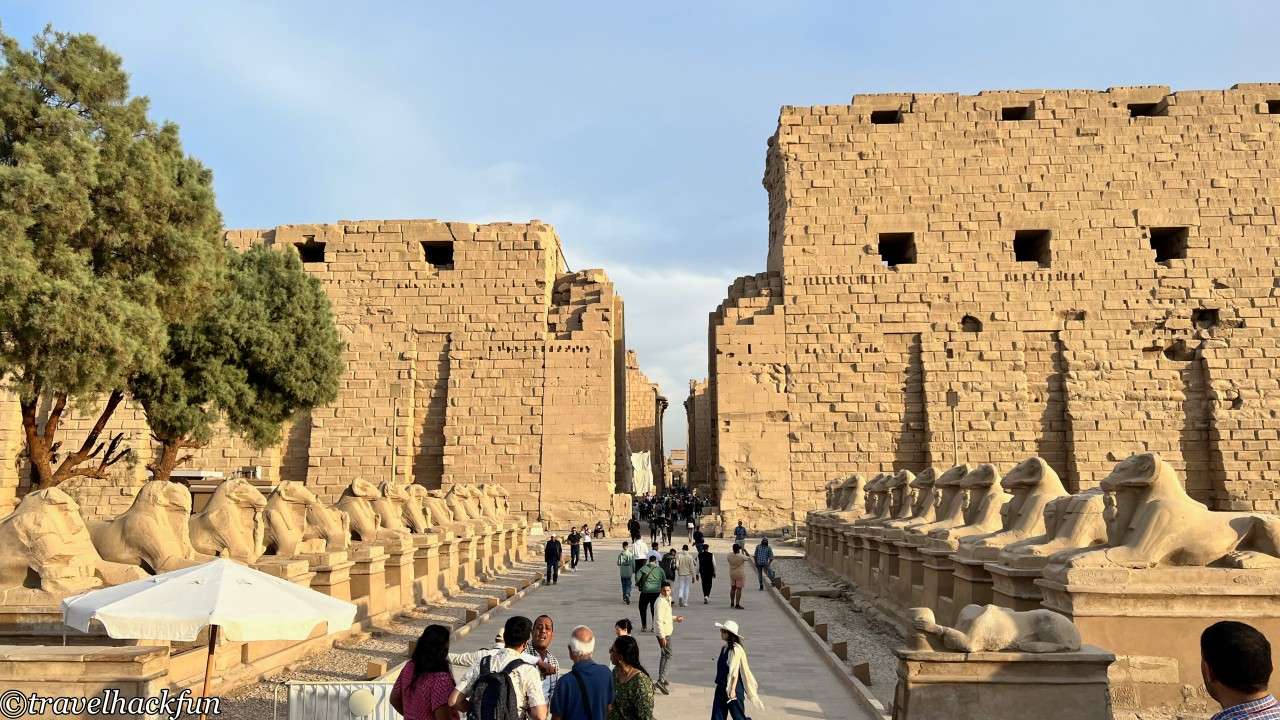
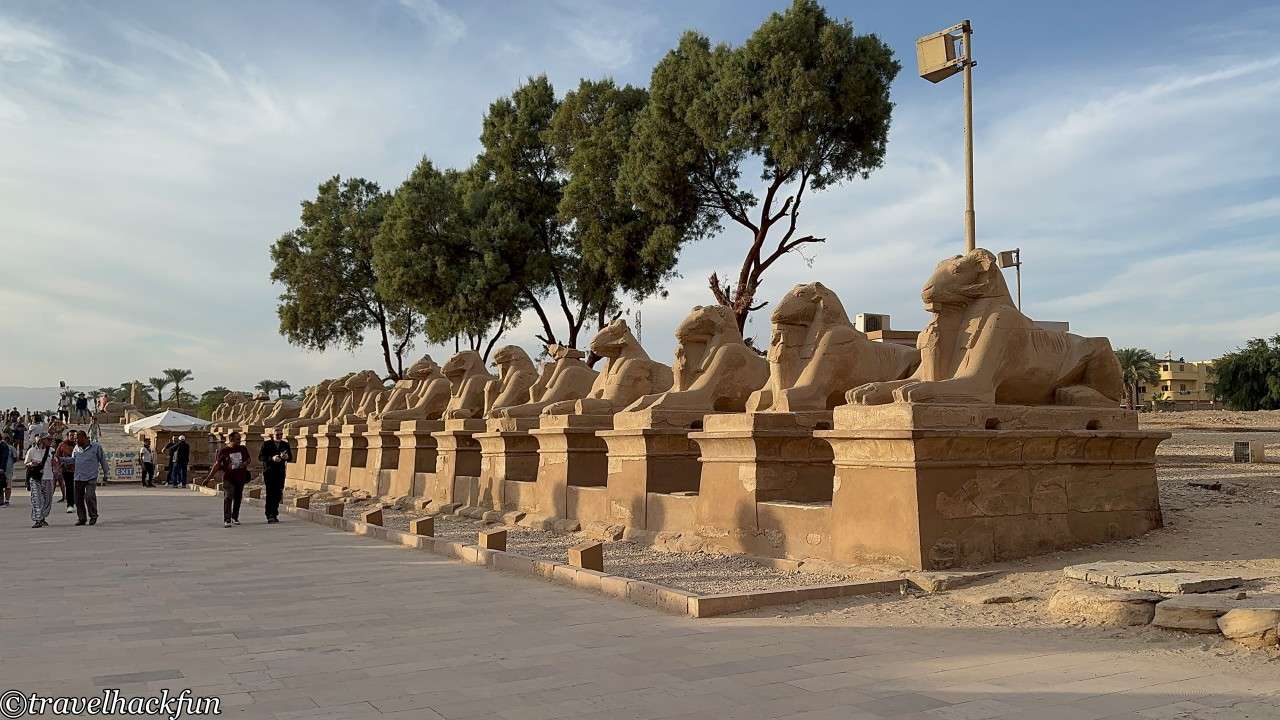
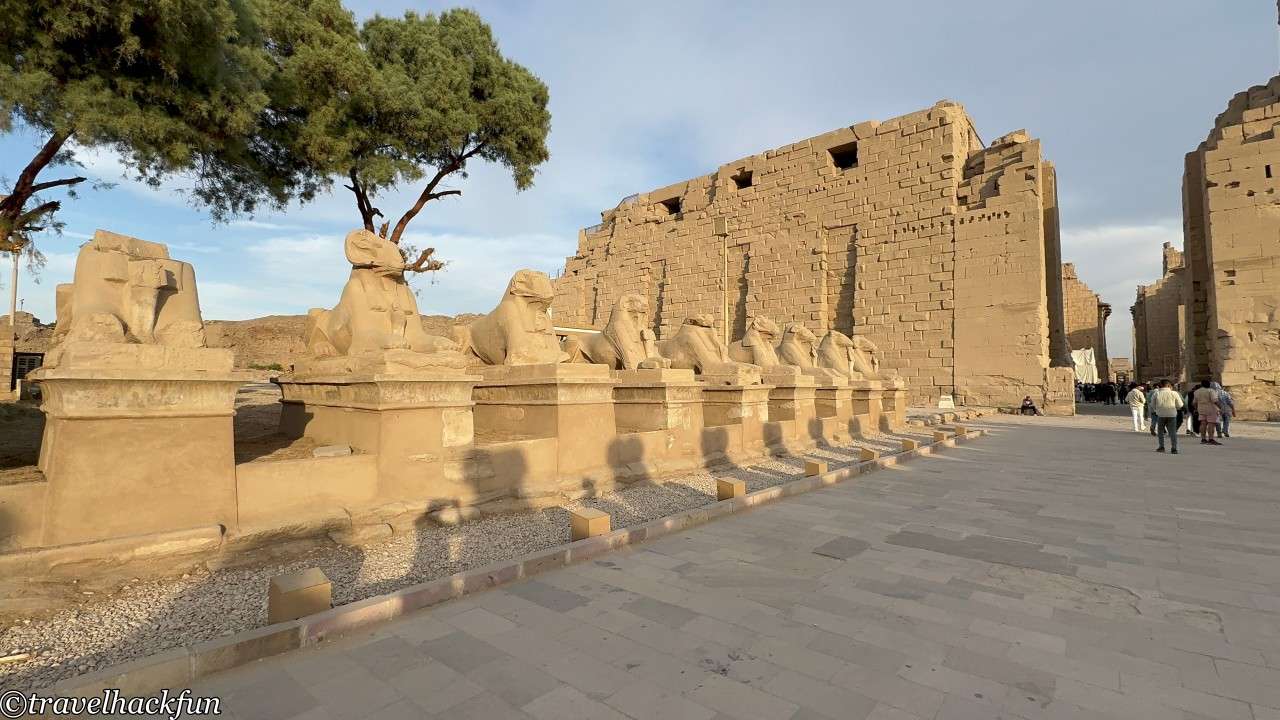
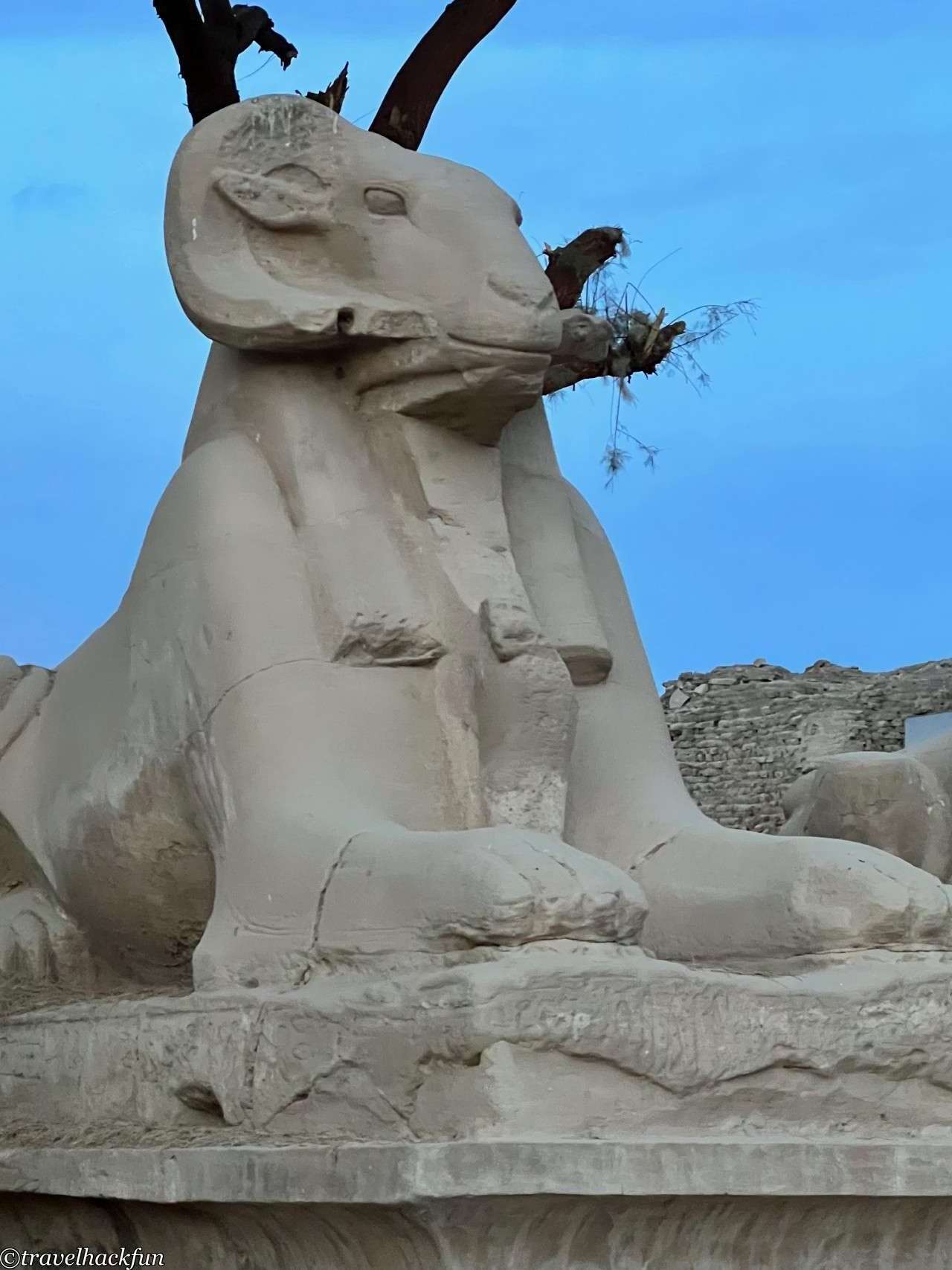
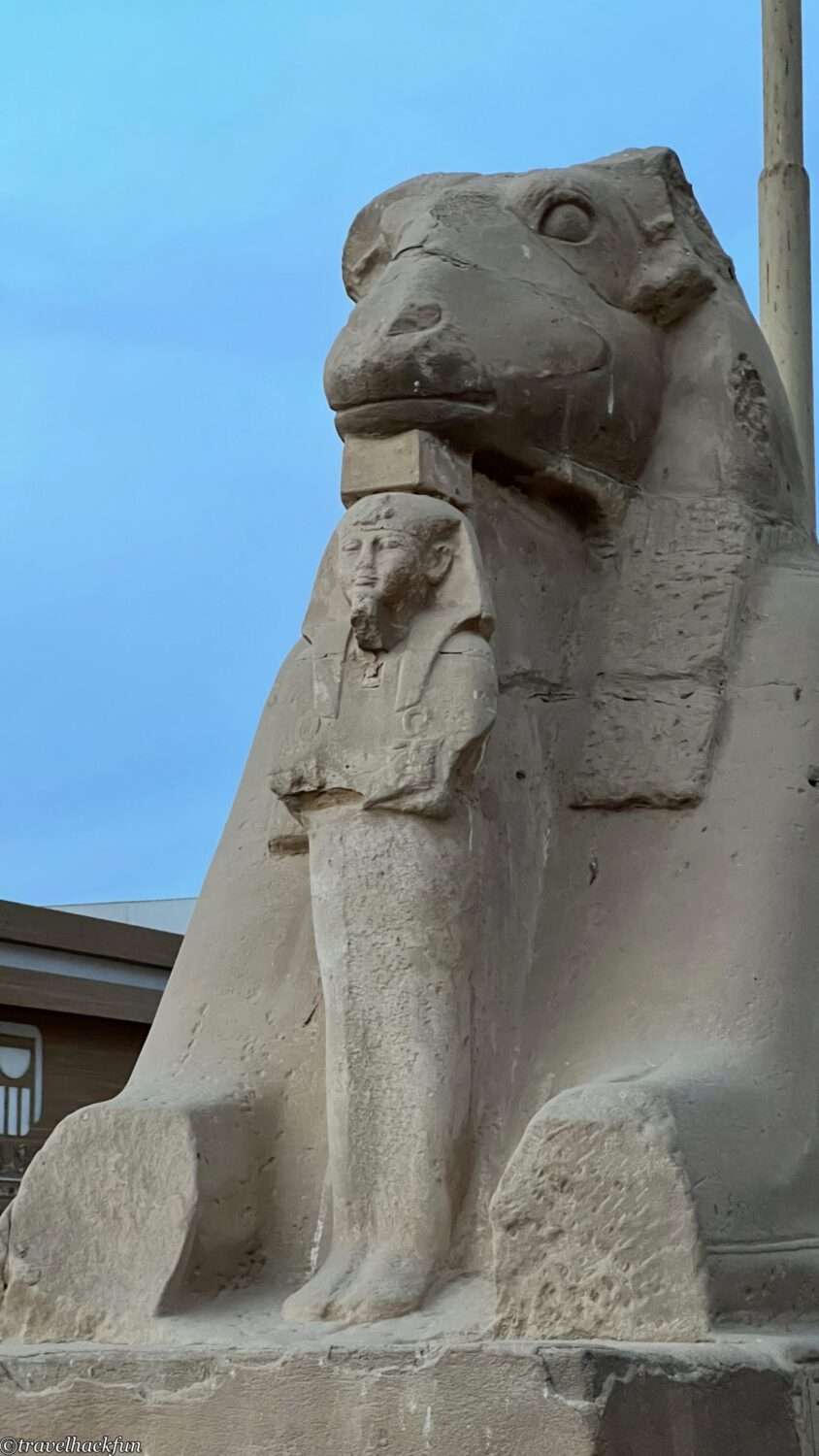
First Pylon
The first pylon, or gateway, consists of two towering structures, each rising 43 meters high, making it the tallest structure in the temple. However, it is also an unfinished project. Built during the reign of Nectanebo I of the 30th Dynasty, its massive scale prevented its completion during his rule, and subsequent pharaohs did not continue construction. As a result, the pylon's surface remains bare mudbrick, lacking the intricate carvings typical of other temple gateways.
The inner side of the pylon retains the mudbrick ramps used by ancient Egyptians to transport massive stones to the top, offering insights into ancient construction techniques. It’s said that during Napoleon’s expedition to Egypt, the ramps still contained leftover stones.
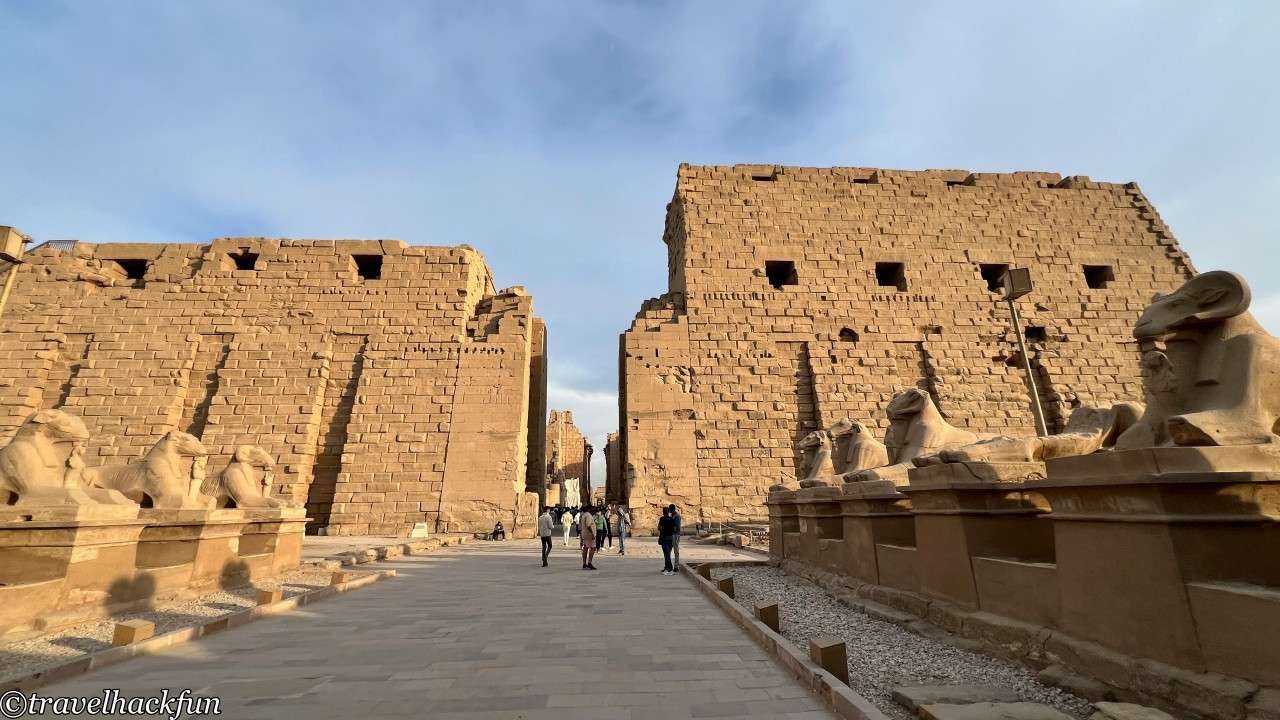
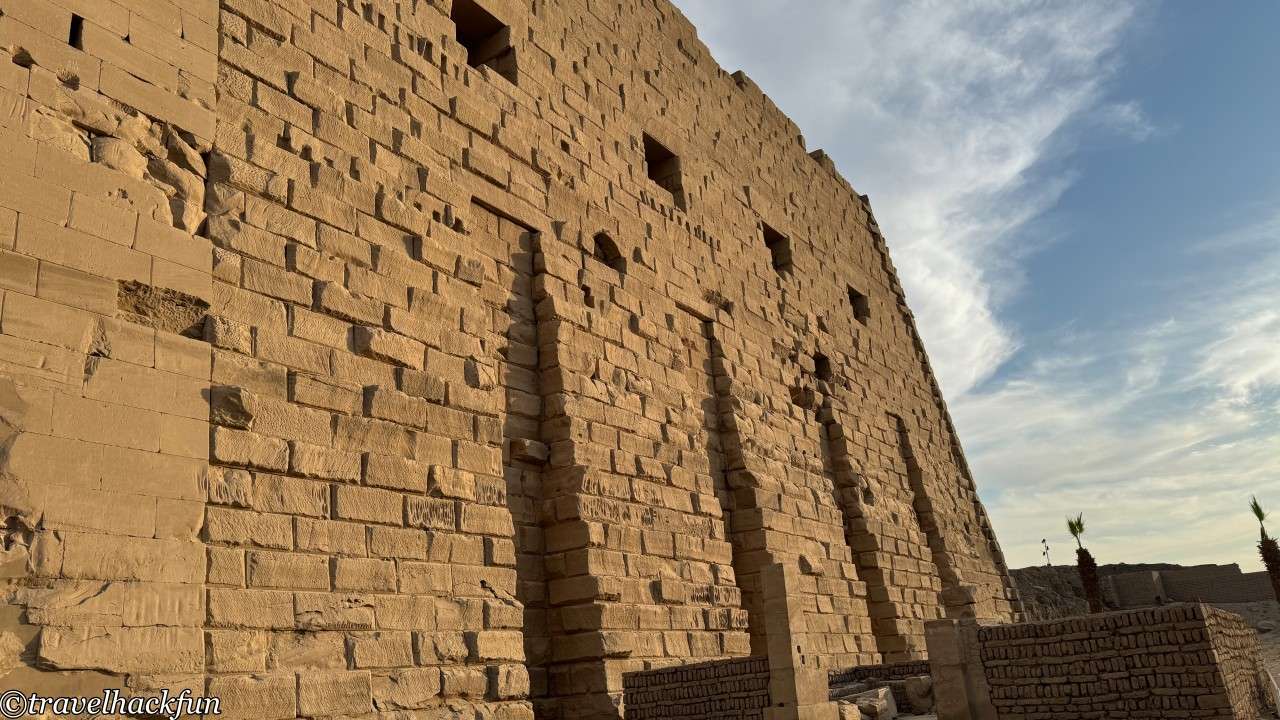
Great Court
Passing through the First Pylon, you will arrive at the Great Court, the forecourt of the Temple of Amun. This rectangular courtyard features well-preserved colonnades on both sides, with several statues of pharaohs scattered throughout the area.
At the center of the courtyard stands a 21-meter-tall column shaped like a bundle of reeds, left behind by the Nubian Pharaoh Taharqa. It was originally part of a larger structure in the middle of the courtyard. In the southeastern corner of the courtyard is a small temple dedicated to Ramses III, whose entrance is flanked by two statues of the pharaoh. The interior of the temple features a simplified traditional design, modeled as a smaller version of his Medinet Habu Temple. On the left side of the courtyard is a shrine built by Seti II, containing three small chapels that were used to house the sacred boats of the Theban Triad.
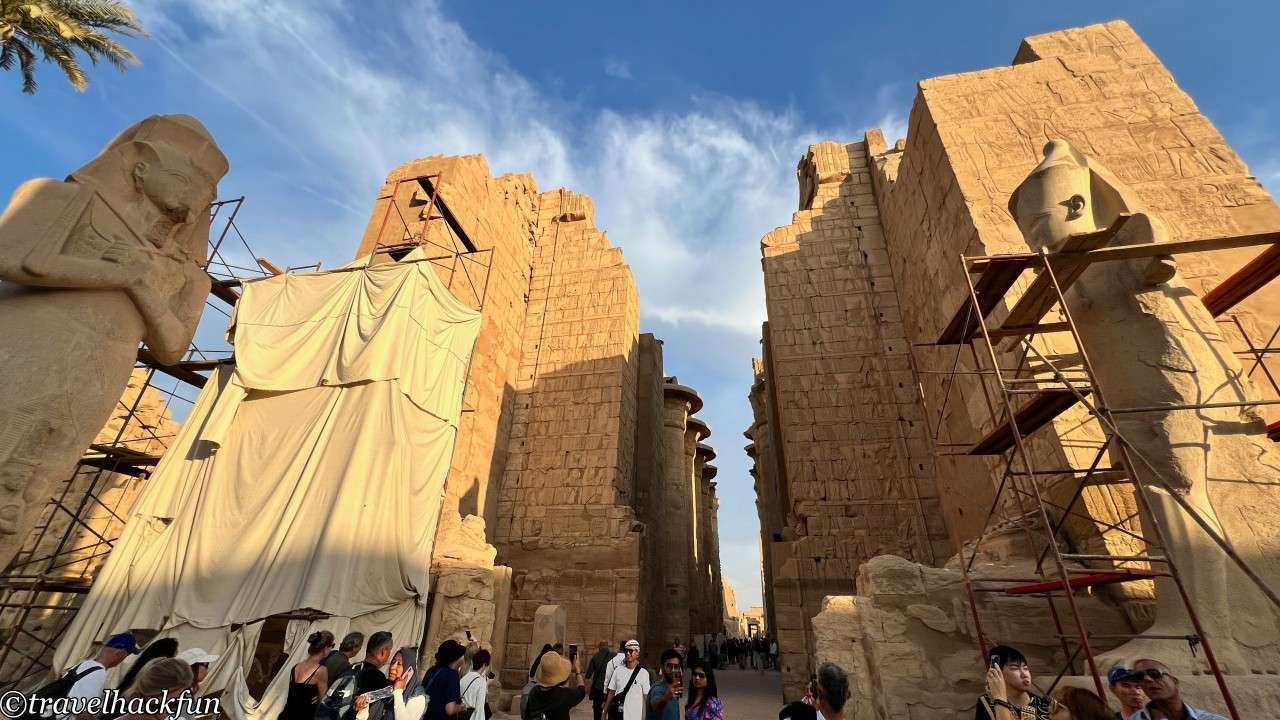
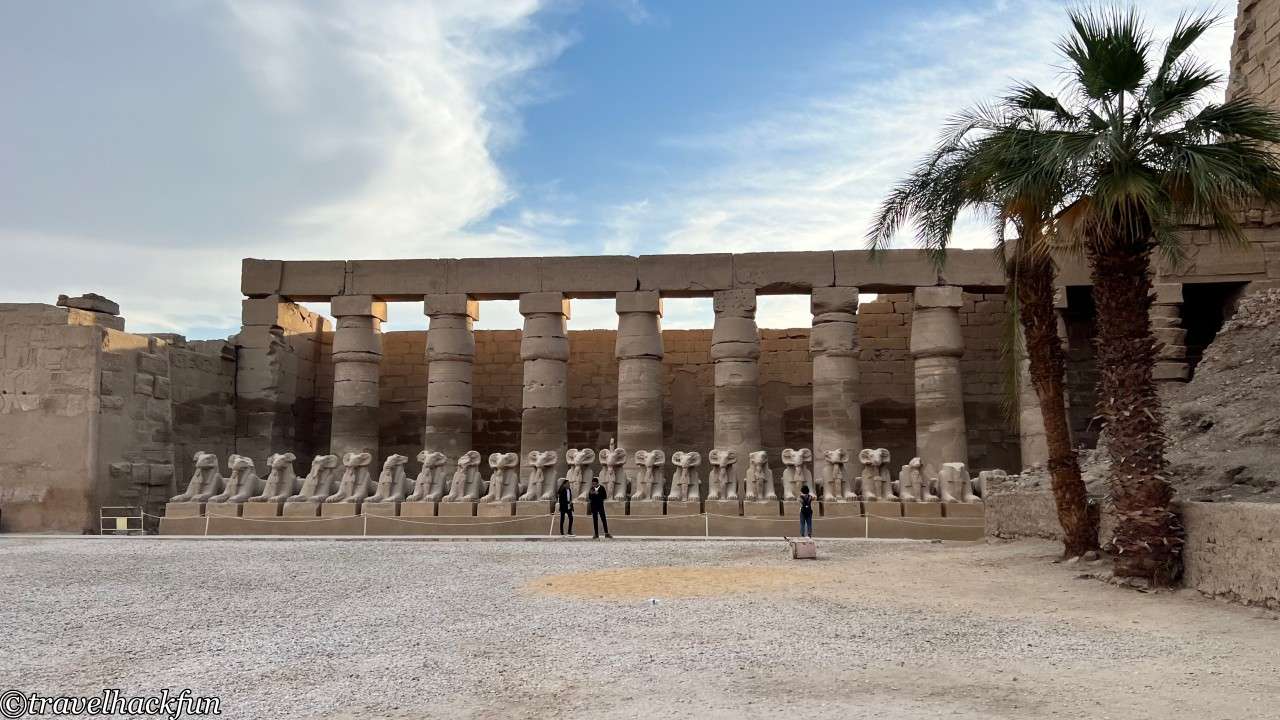
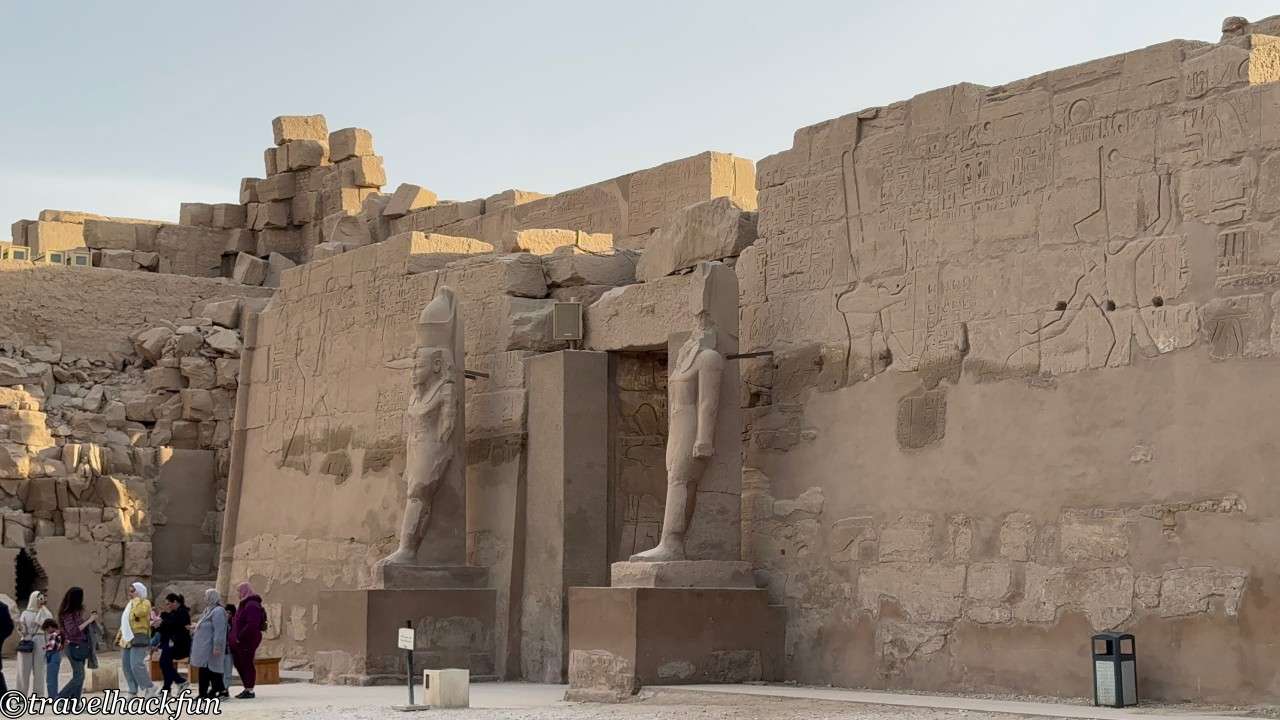
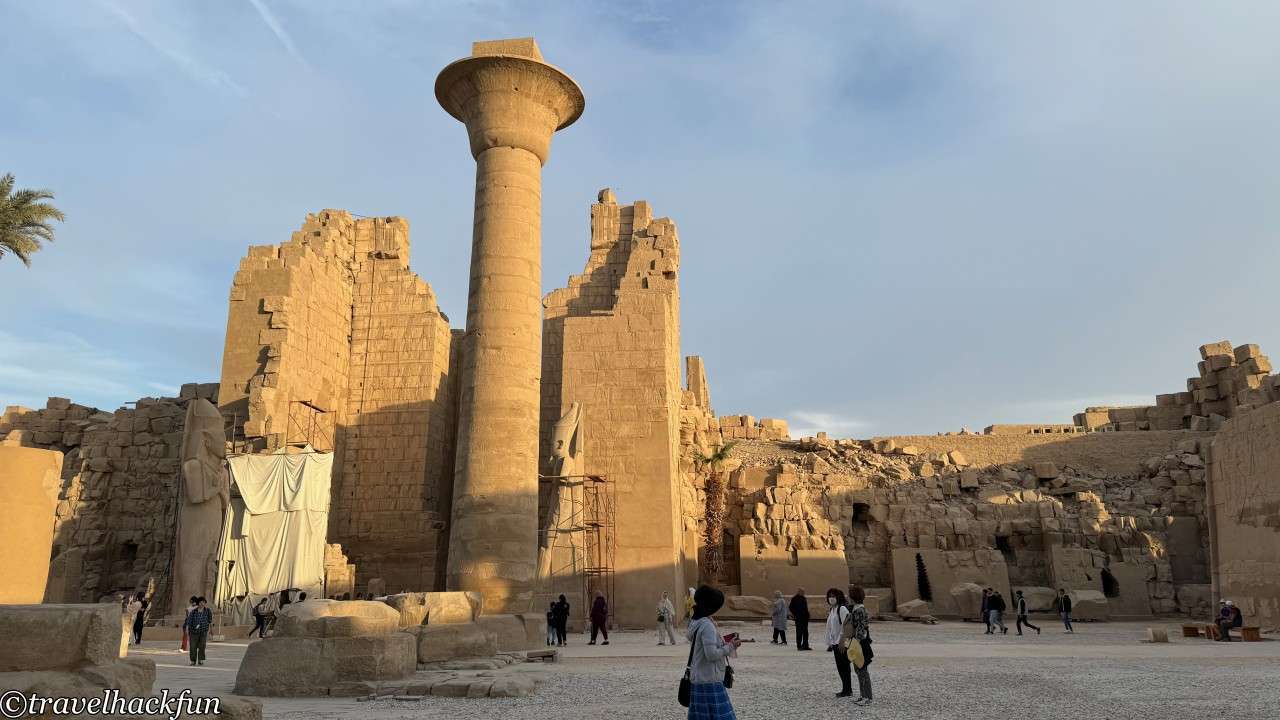
Great Hypostyle Hall
After passing through the First Courtyard and the Second Pylon, you’ll enter the Great Hypostyle Hall, the most spectacular structure within the Temple of Amun at Karnak. Spanning 5,500 square meters, the hall contains 134 giant columns, with the central ones reaching a height of 24 meters, representing the papyrus reeds of the Nile.
The hall was constructed during the New Kingdom by Seti I of the 19th Dynasty and completed by his son Ramses II. The northern side’s detailed and delicate carvings were created under Seti I, while the southern side, completed by Ramses II, features slightly rougher workmanship. The walls and columns are adorned with carvings depicting the pharaohs' military achievements and religious ceremonies, showcasing their authority in both domestic and foreign affairs.
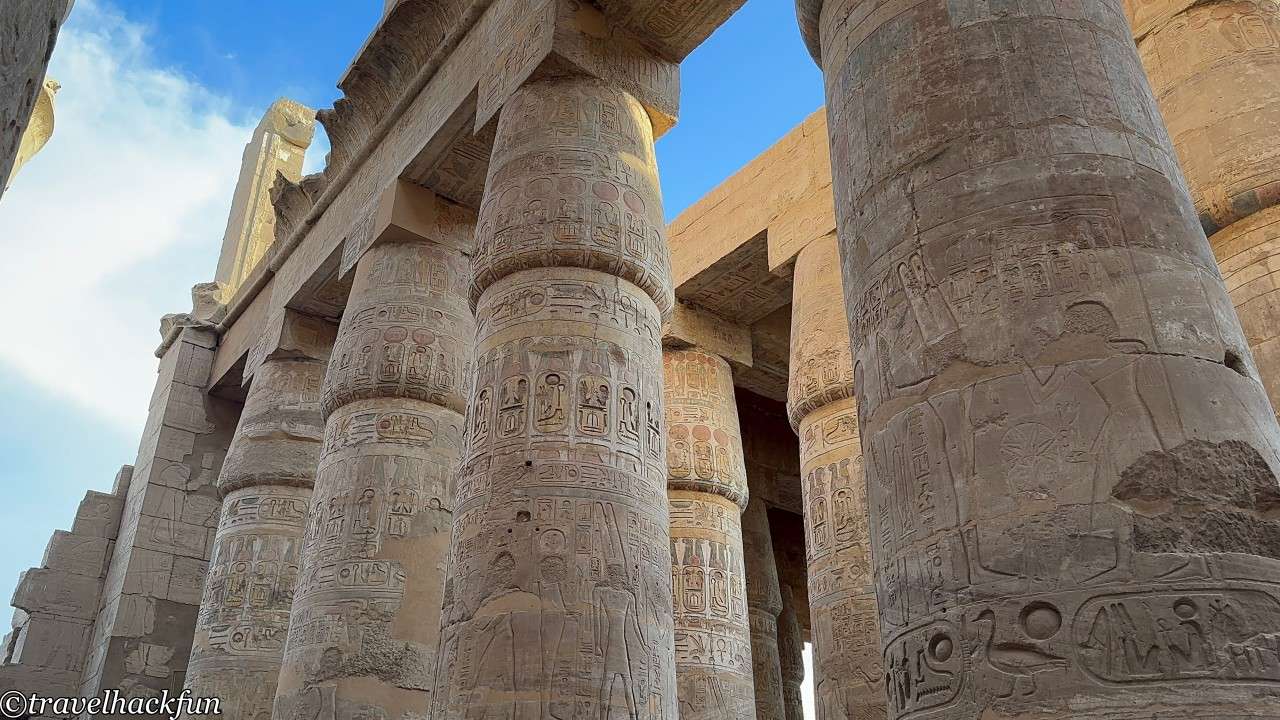
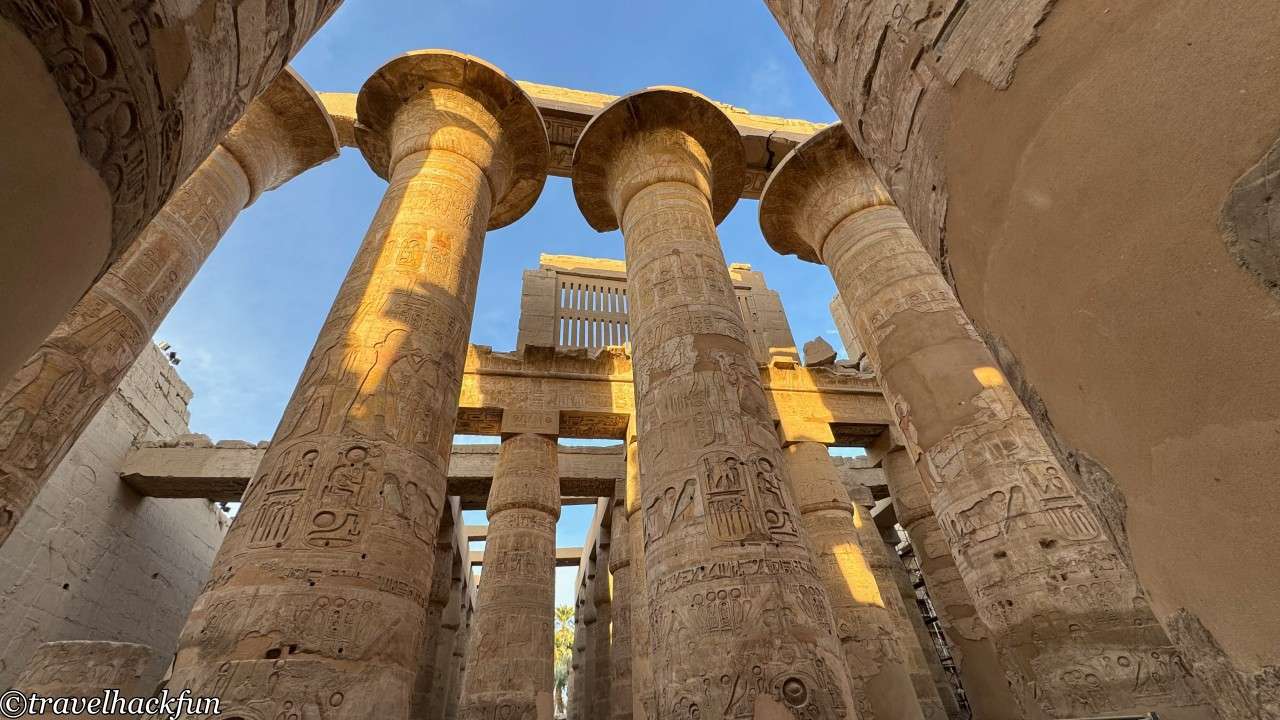
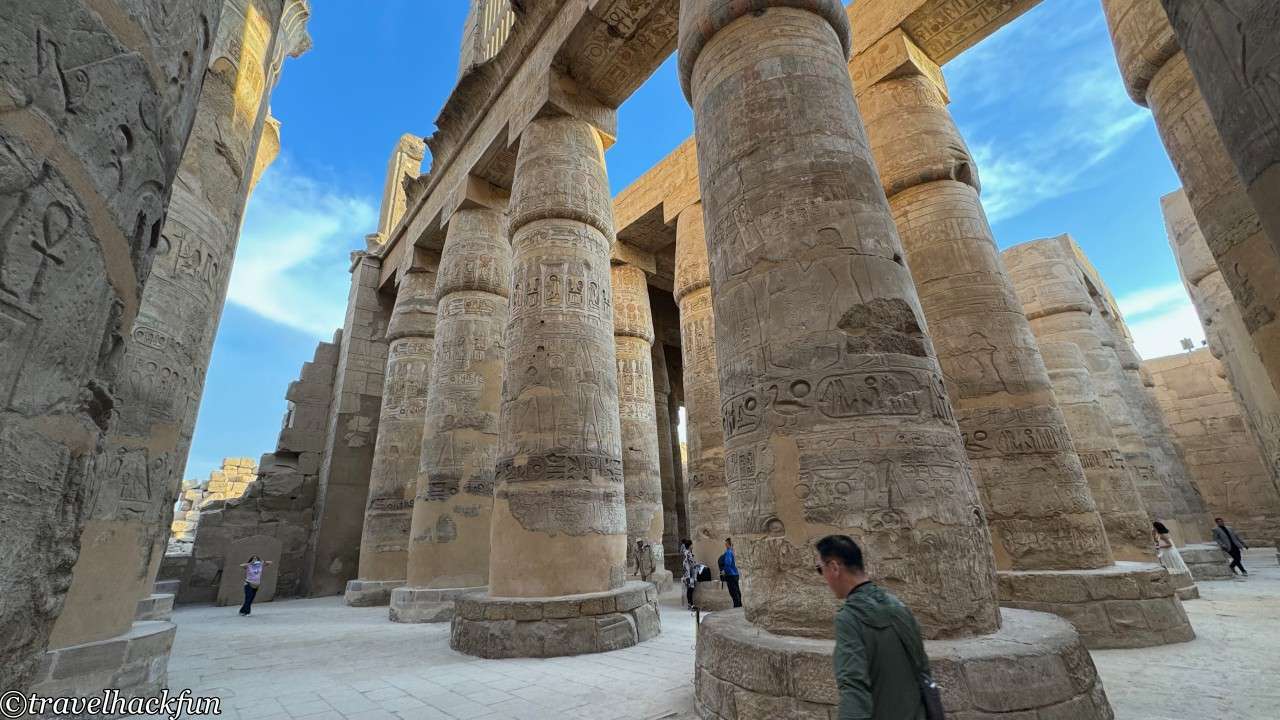
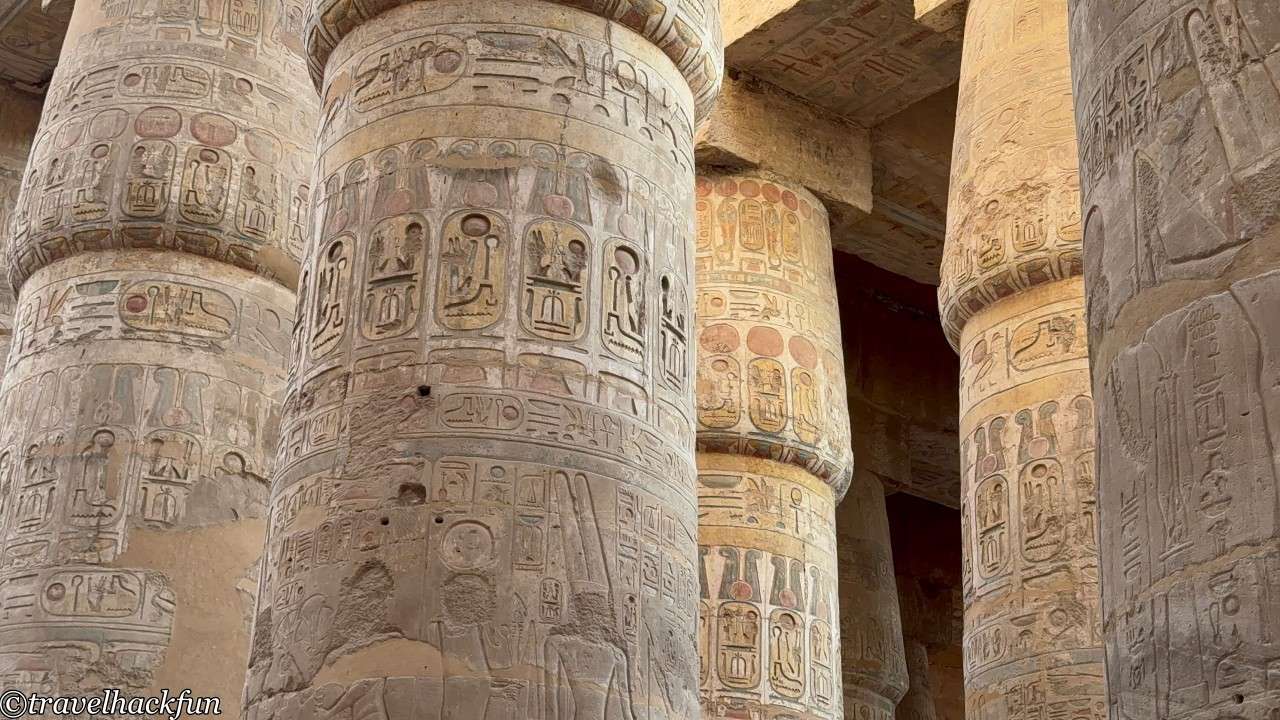

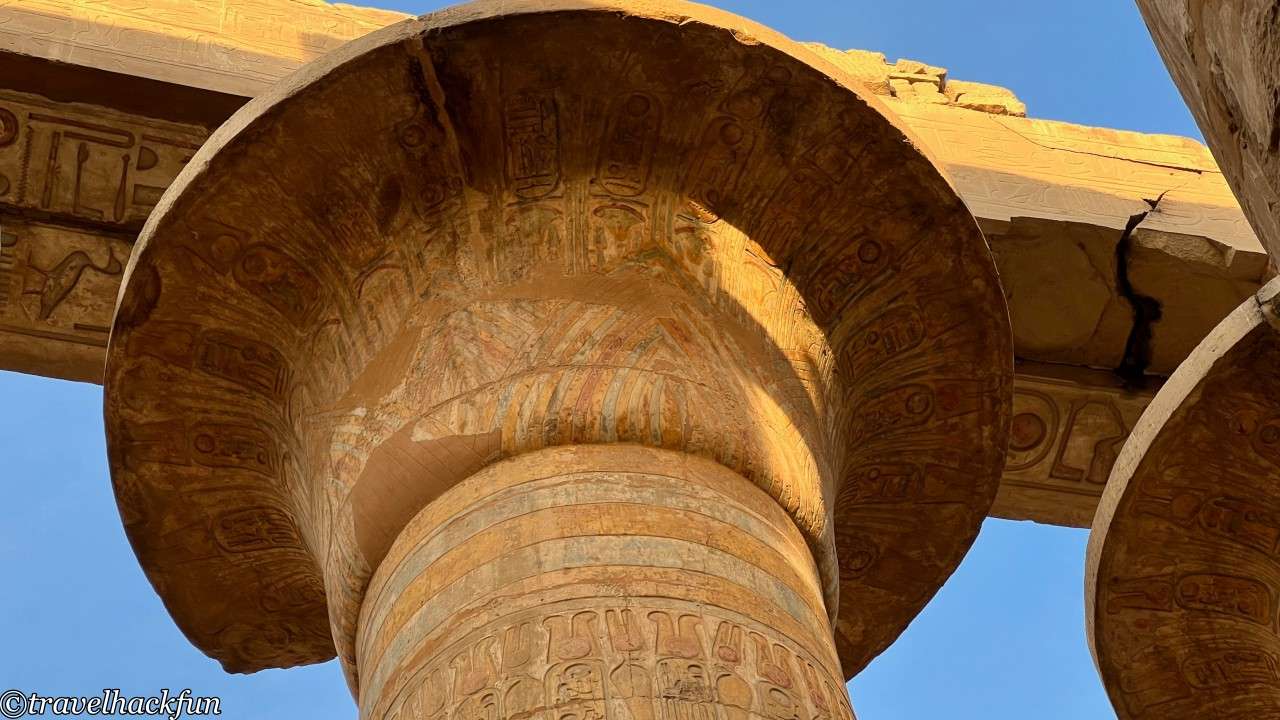
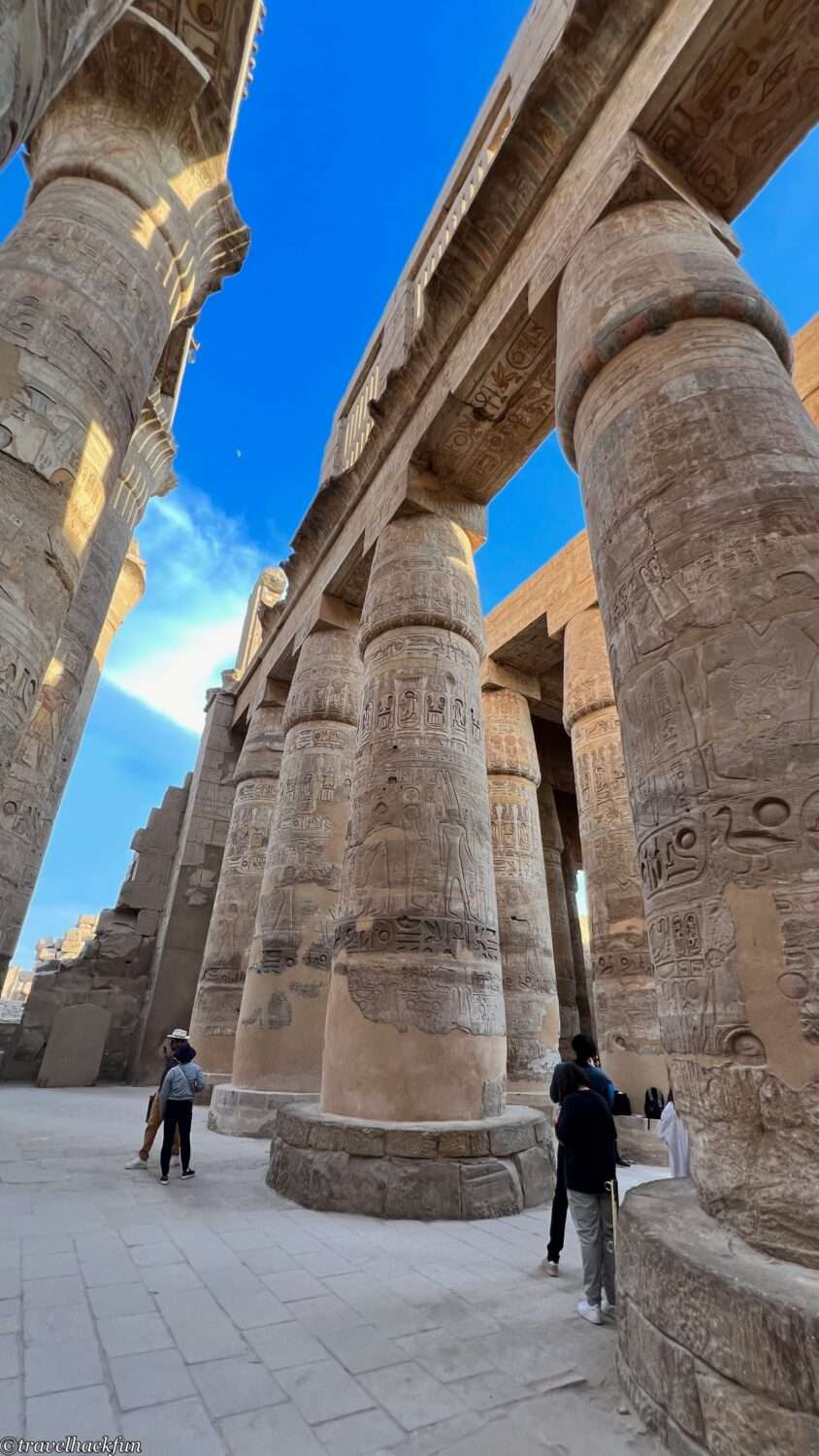
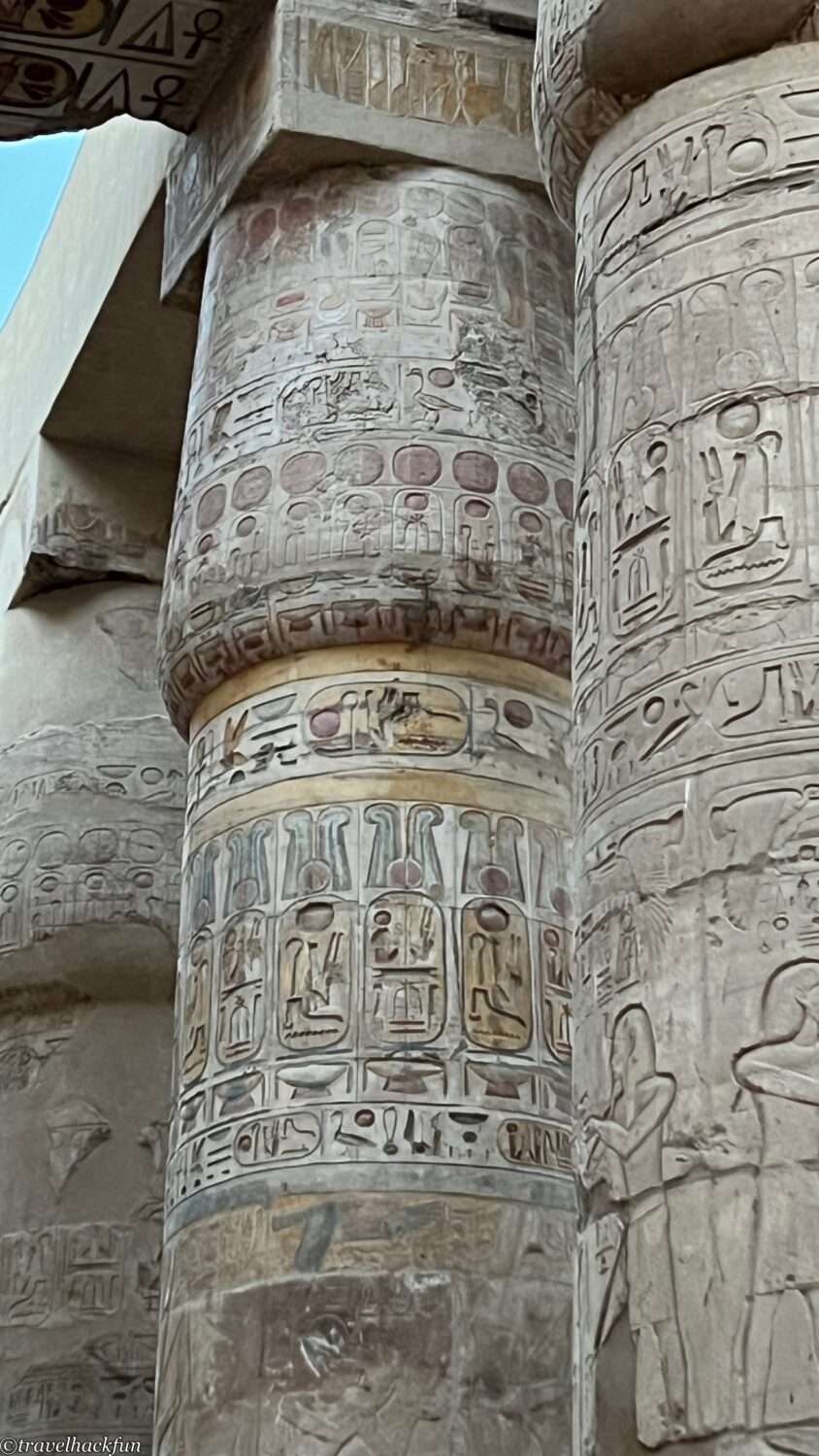
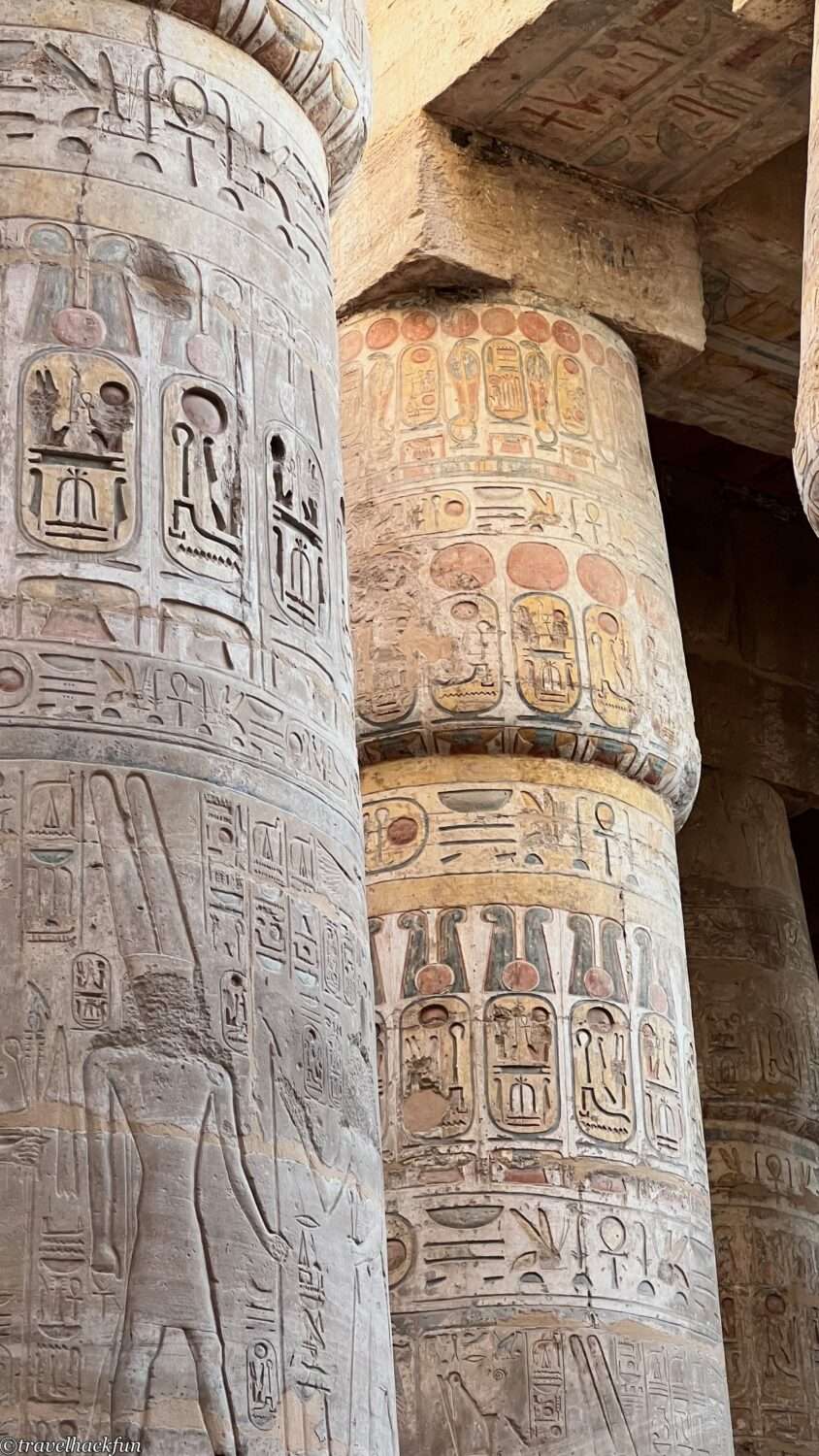
Obelisks and Pylons
The temple complex is dotted with numerous pylons and obelisks. The Third and Fourth Pylons were built by Thutmose I and Hatshepsut. Thutmose I, who established Thebes as the New Kingdom capital, initiated many expansions that turned Karnak Temple into such an extraordinary site. Although some obelisks and parts of the temple have been destroyed, the grandeur of their remnants is still evident.
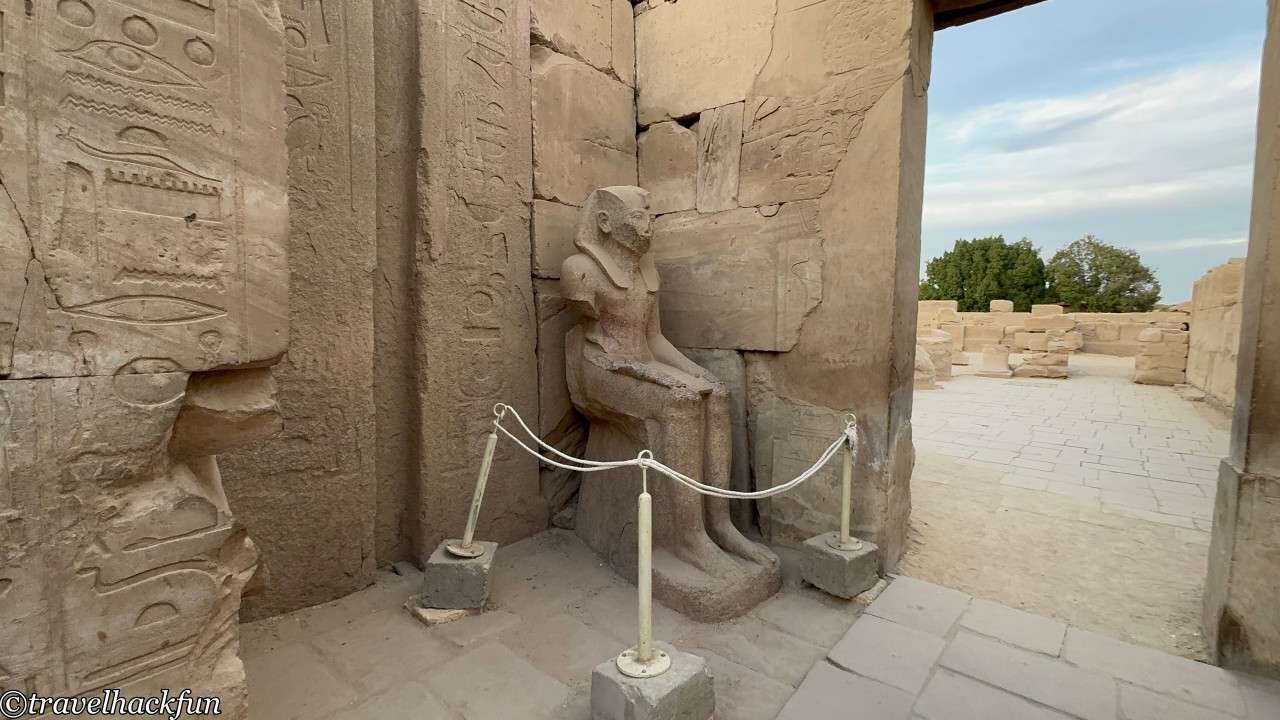
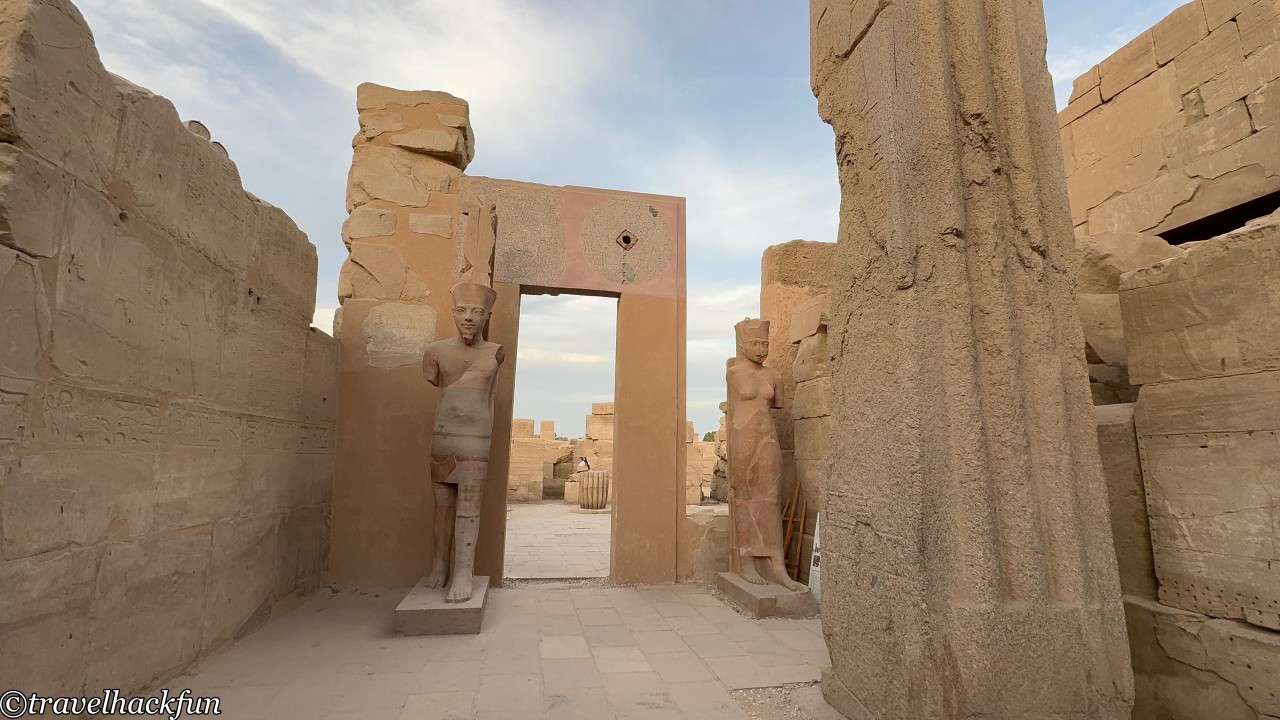
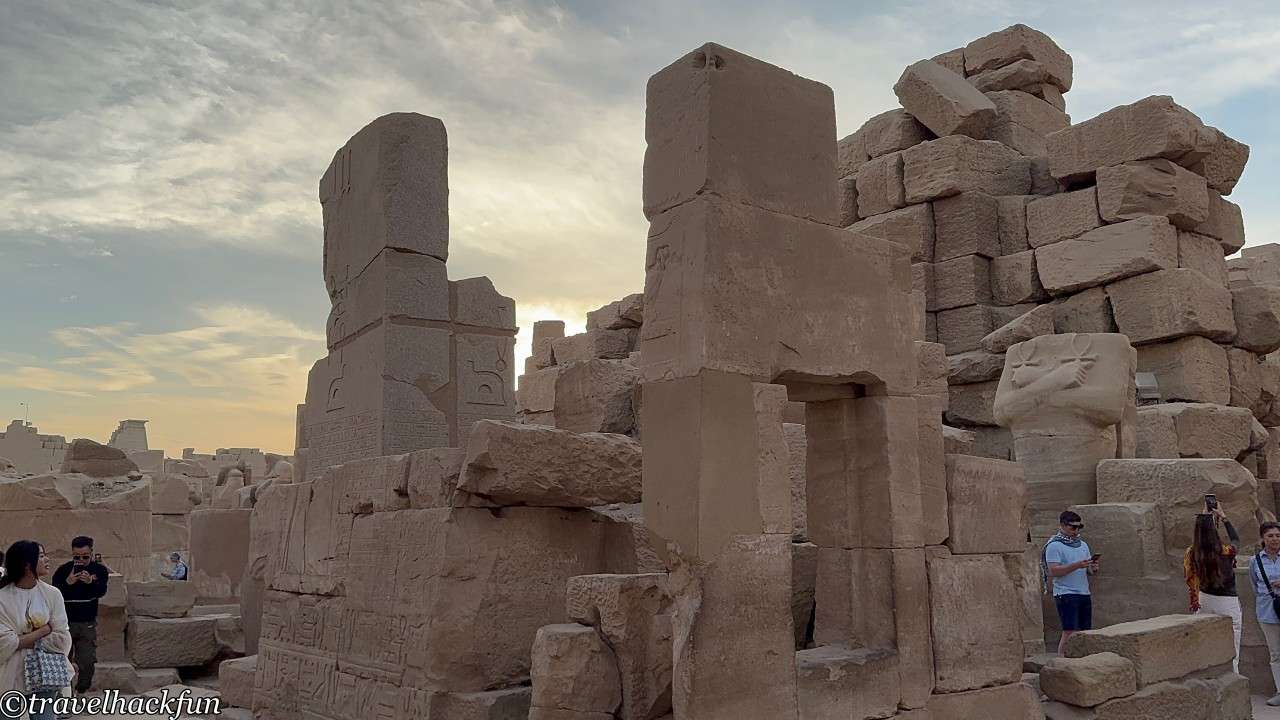
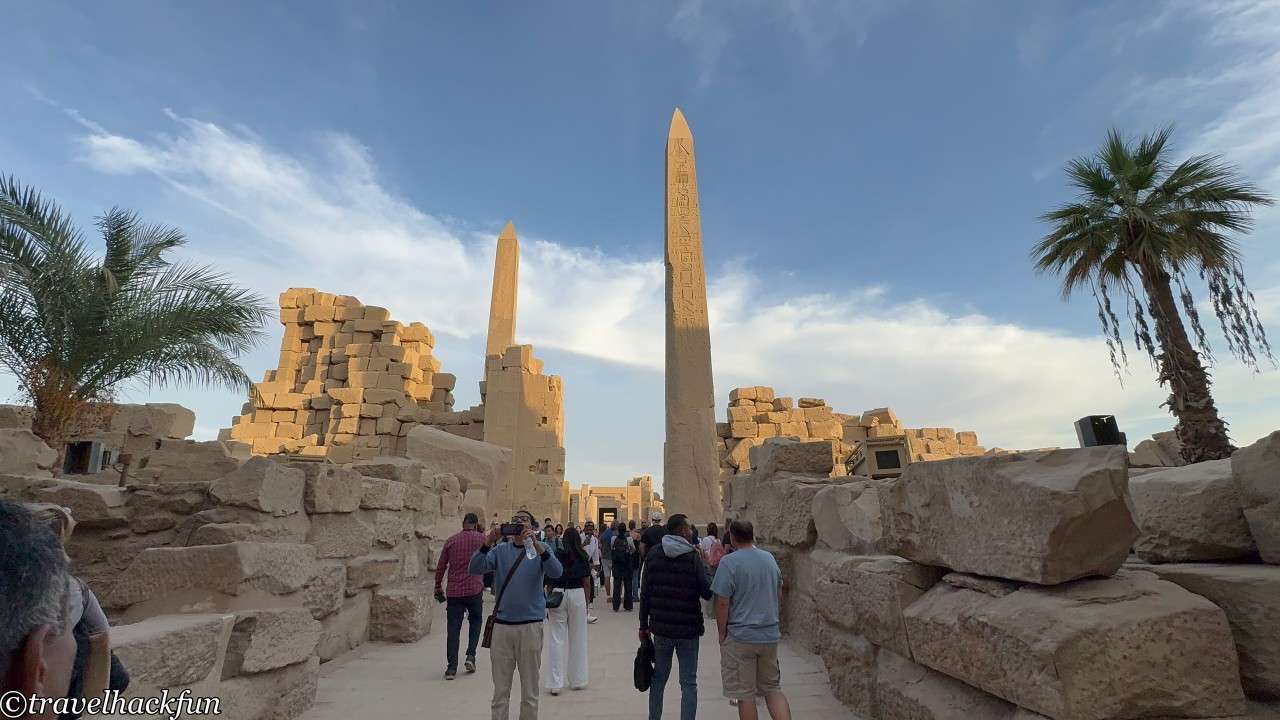
Obelisks symbolized the sun god Ra and were considered sacred markers. They were usually erected at temple entrances or significant locations, highlighting the gods' power and the pharaoh's devotion. Among the most famous is the 30-meter-tall obelisk of Hatshepsut, originally gilded at the tip. Hatshepsut, one of the few female pharaohs in Egyptian history, erected this obelisk as her tallest surviving monument. She had also planned a taller obelisk, but it was never completed; this unfinished obelisk can now be found in Aswan (Unfinished Obelisk).
Nearby is another notable obelisk by Thutmose I, standing at 21.7 meters and considered the oldest in Karnak Temple. There was also an obelisk by Thutmose III, often called the "Napoleon of Egypt" for his military achievements. His nearly 20-meter-tall obelisk was later moved to Istanbul’s Sultan Ahmed Square.
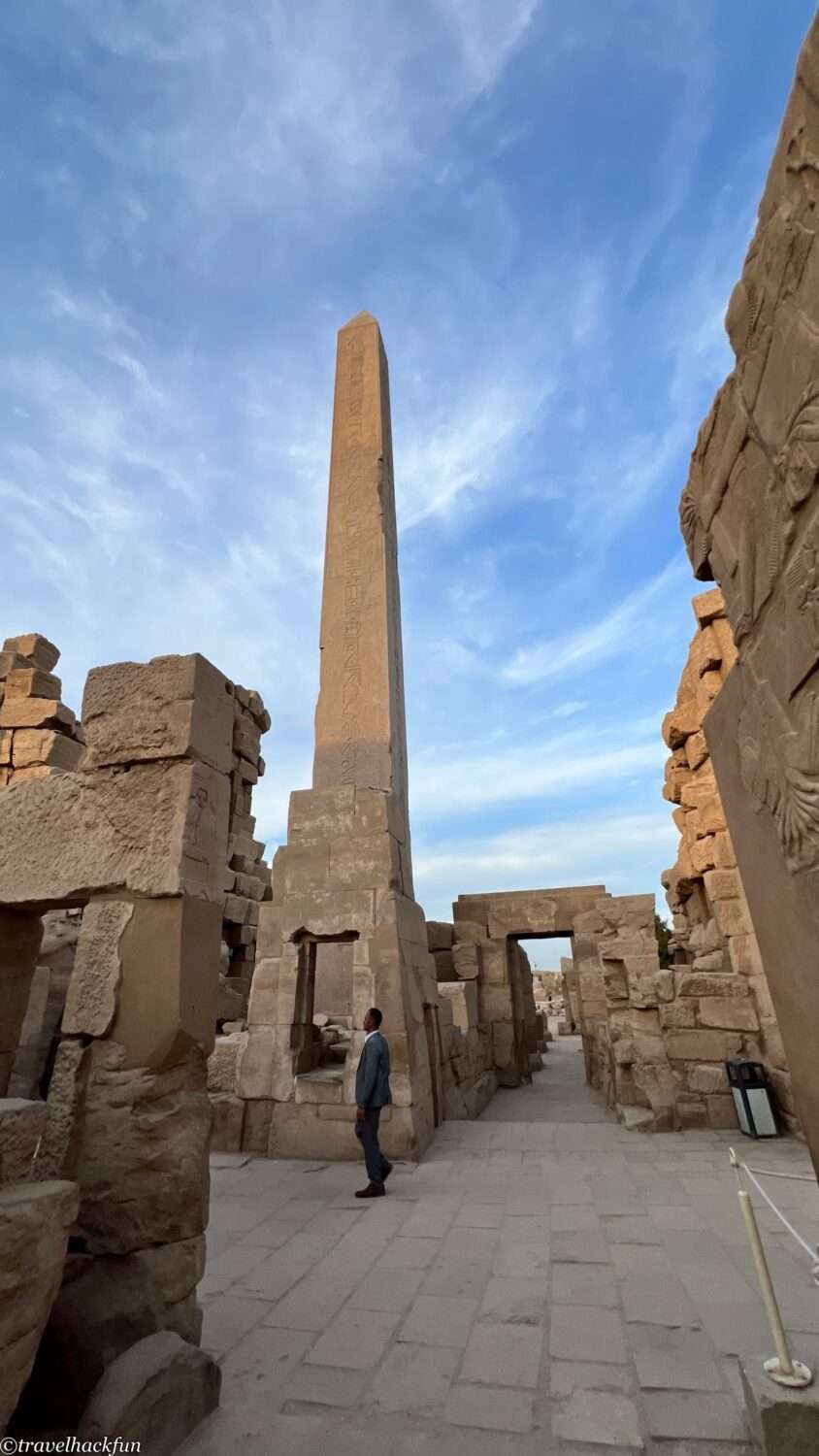
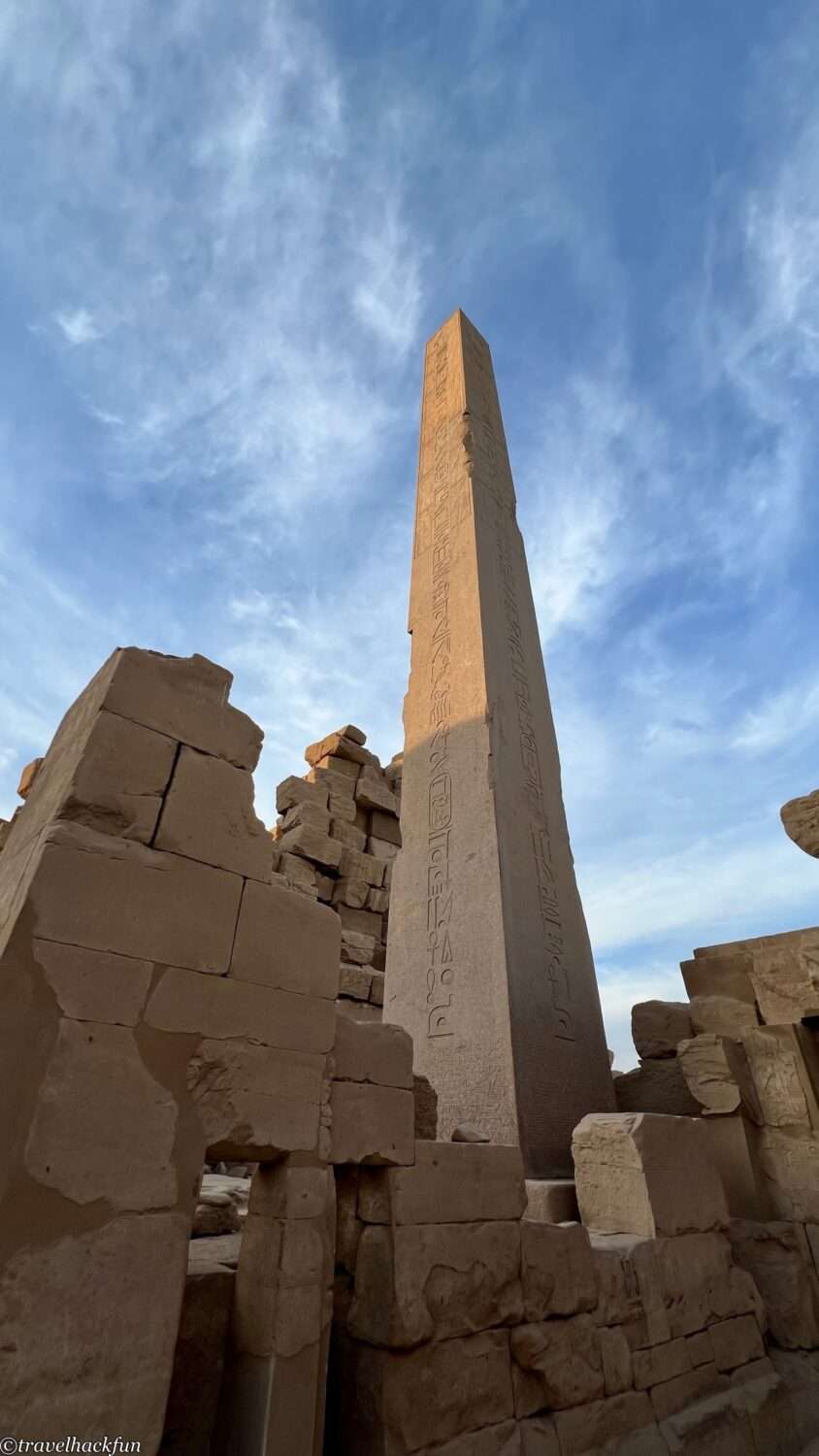
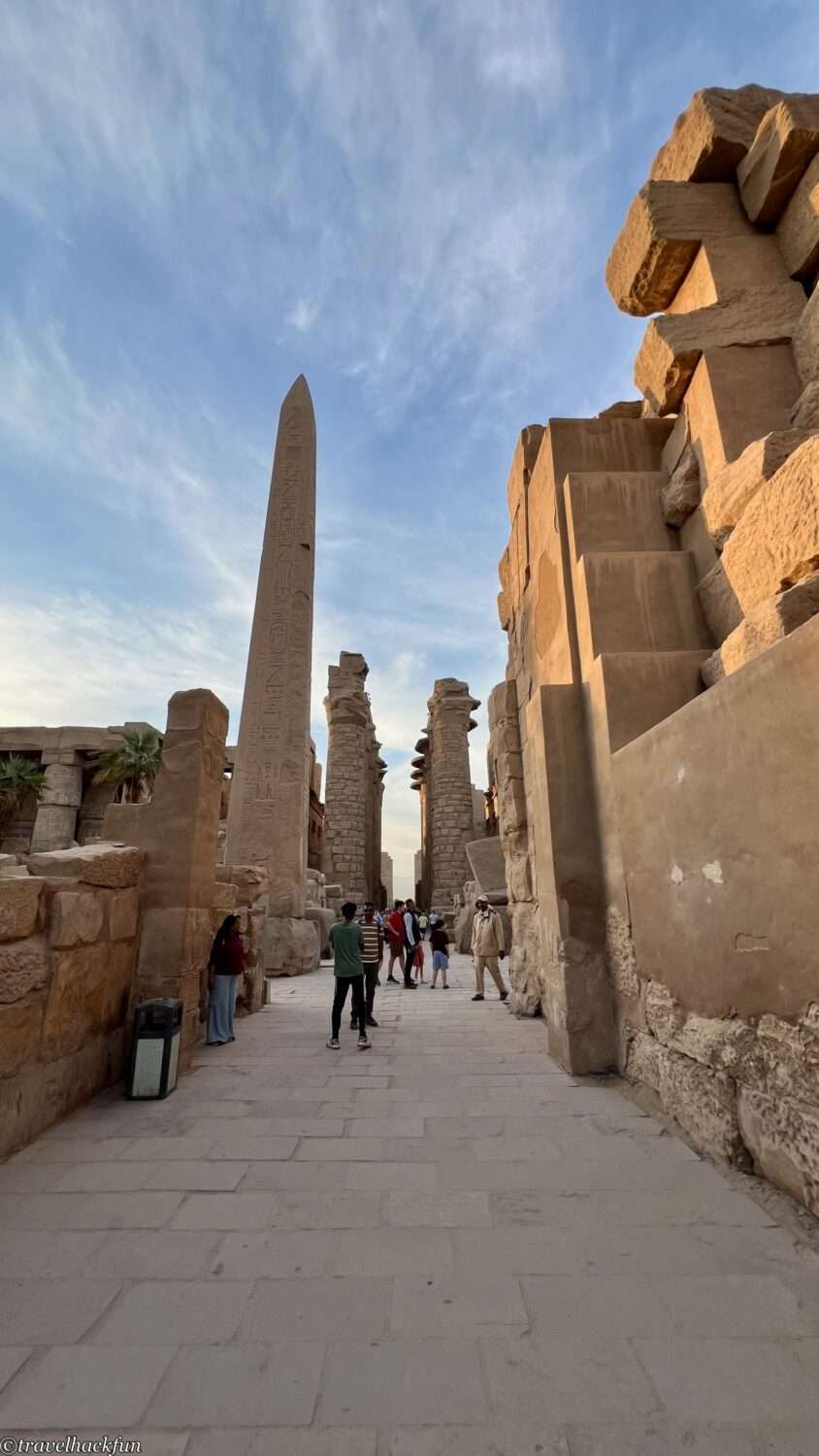
At the obelisk area, turn right to pass through the Seventh and Eighth Pylons and a partially ruined colonnaded hall. This section was constructed by the female pharaoh Hatshepsut, originally adorned with inscriptions detailing her achievements and statues bearing her likeness. However, after her death, her successor, Thutmose III, attempted to erase her legacy. As a result, some of the carvings on the pylons were destroyed or altered, and the faces of her statues were defaced. Only the bodies of the statues remain intact, as they were symbols of the goddess Isis, which ancient Egyptians dared not destroy.
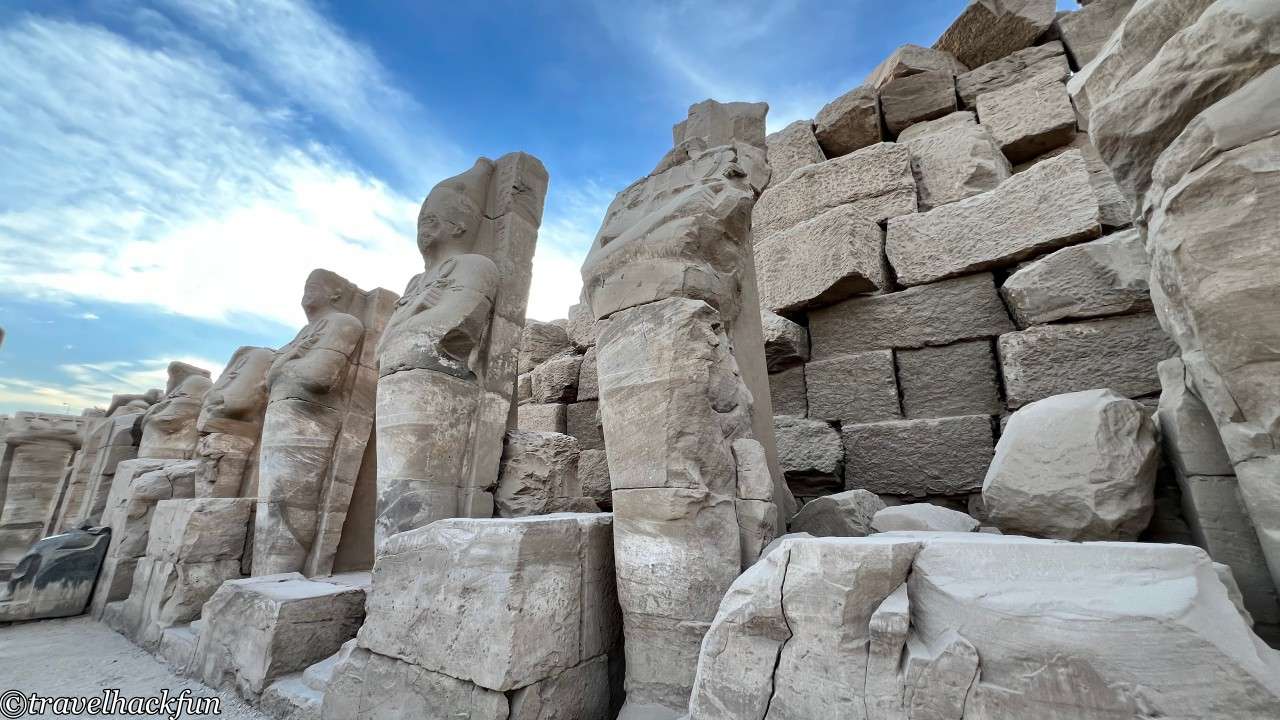
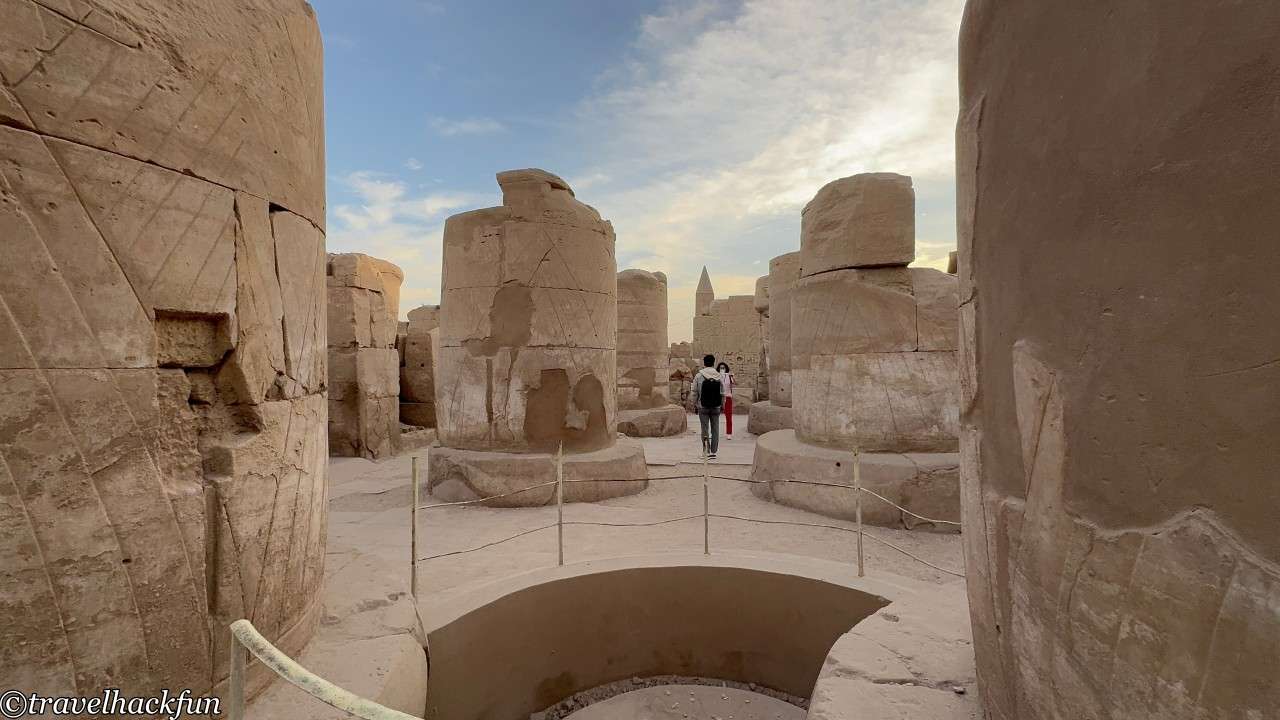
Continuing forward, you will come across a shorter obelisk—Thutmose IV's obelisk, which stands at approximately 10 meters tall.
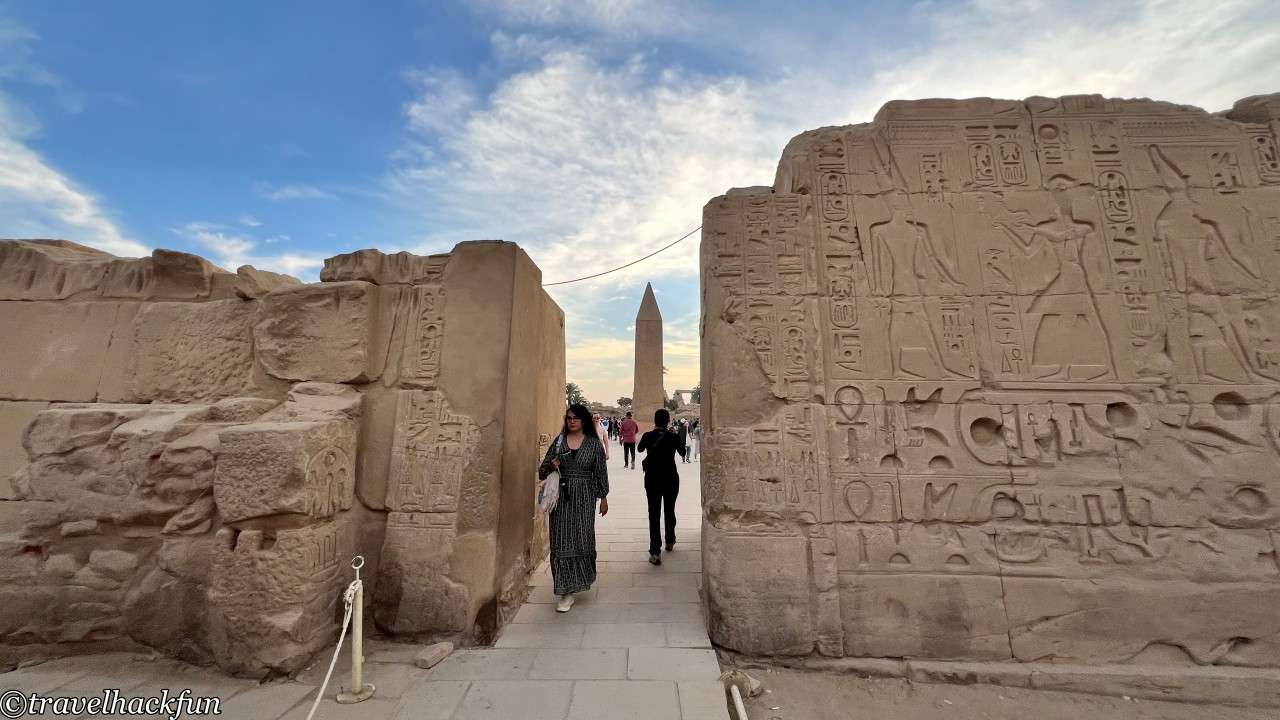
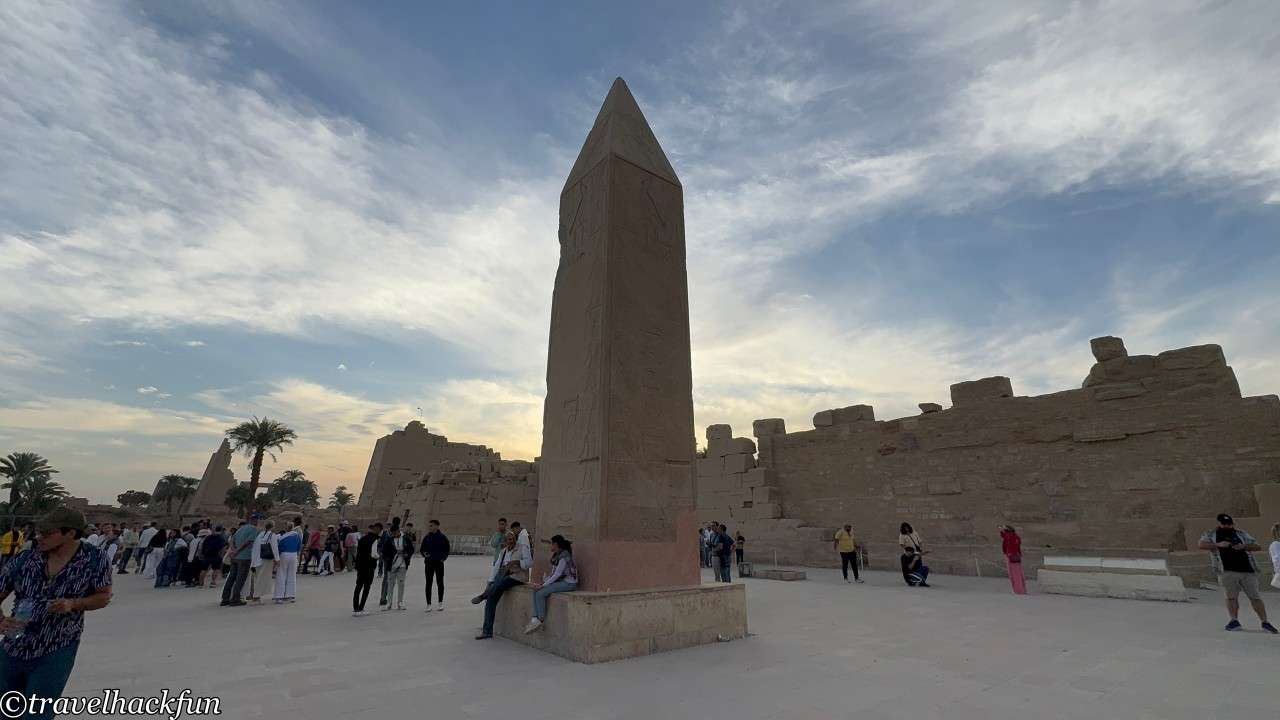
Sacred Lake
The Sacred Lake was an essential part of ancient Egyptian purification rituals. Measuring approximately 120 meters in length and 77 meters in width, it connects to the Nile through underground channels, ensuring clean and flowing water. Before religious ceremonies, priests would bathe in the lake to purify themselves physically and spiritually. The lake was also used for other religious activities, such as washing statues of gods.
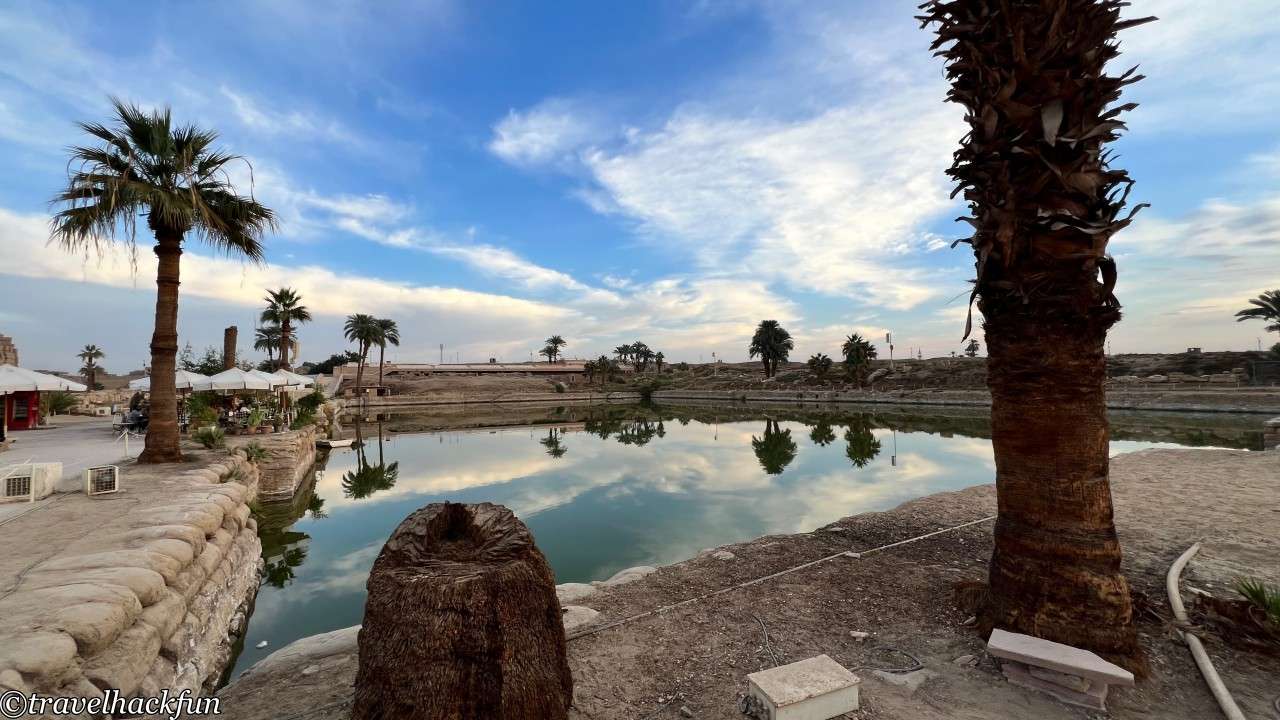
Next to the Sacred Lake stands a large scarab beetle statue, carved from granite by Pharaoh Amenhotep III. The scarab beetle symbolized rebirth and protection, considered an incarnation of the sun god Ra. A popular tradition among tourists is to walk counterclockwise around the statue seven times to make a wish, and we naturally joined the crowd to do the same.
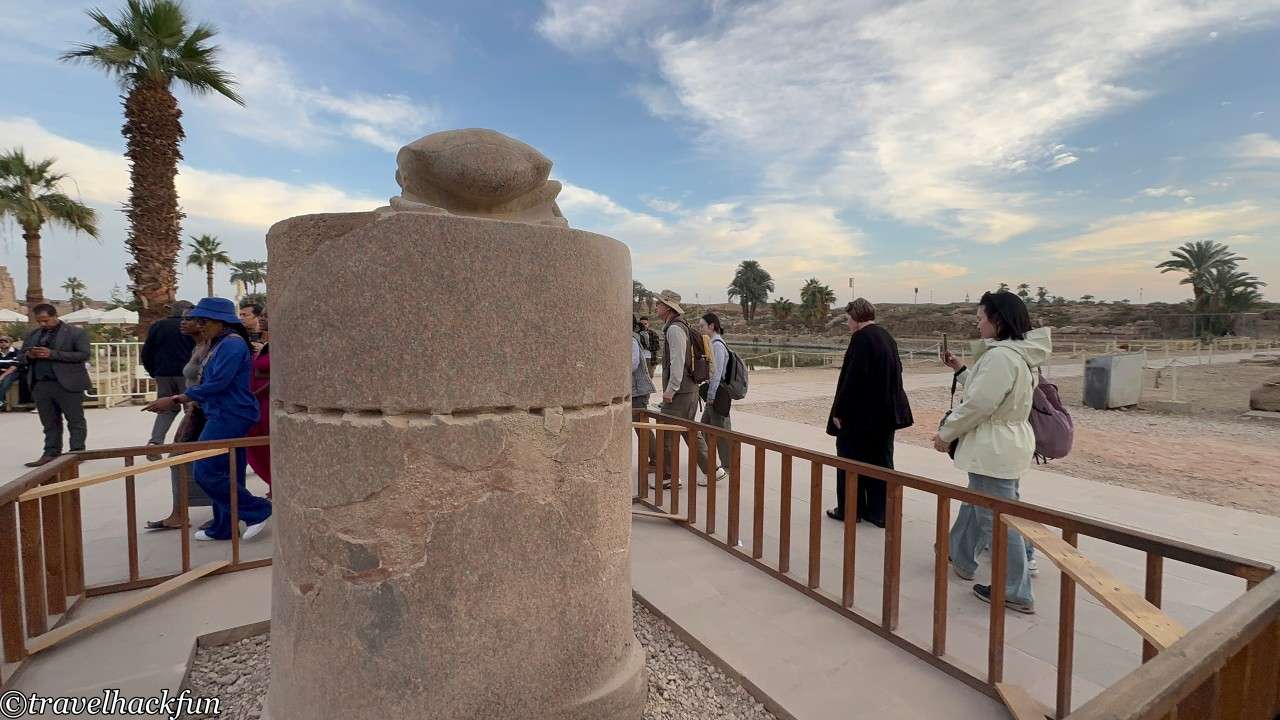
After passing the Sacred Lake, you can continue south toward the Temple of Mut, where you will encounter another section of the Avenue of Sphinxes. Along the way, the surrounding walls feature many intricate and impressive carvings. However, continuing further south requires more time. If your visit is limited, it is recommended to end the tour here and return to the main Temple of Amun area.
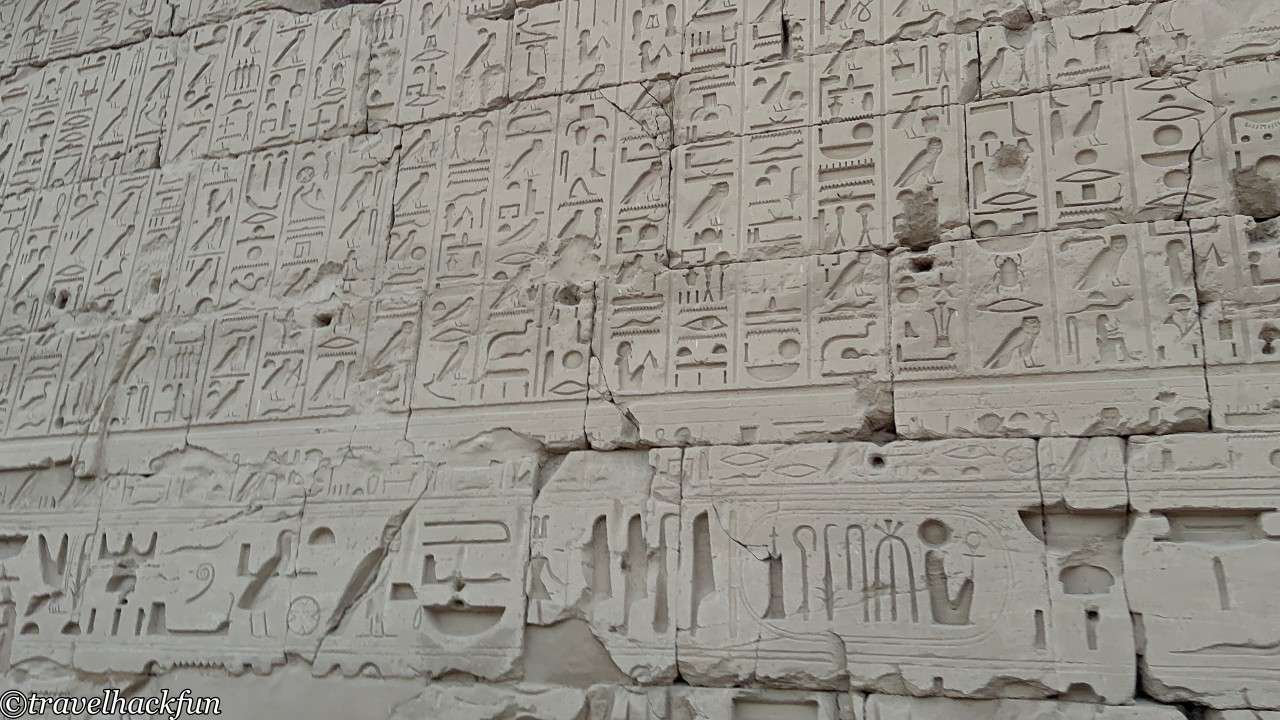
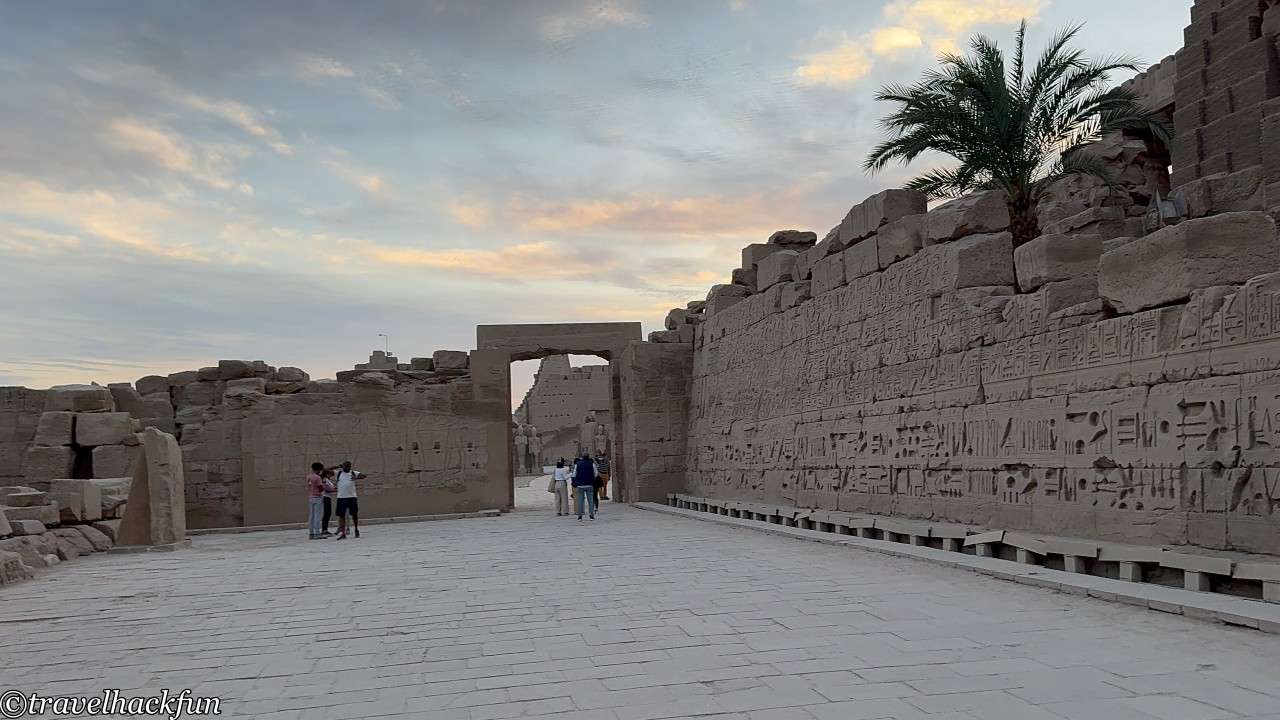
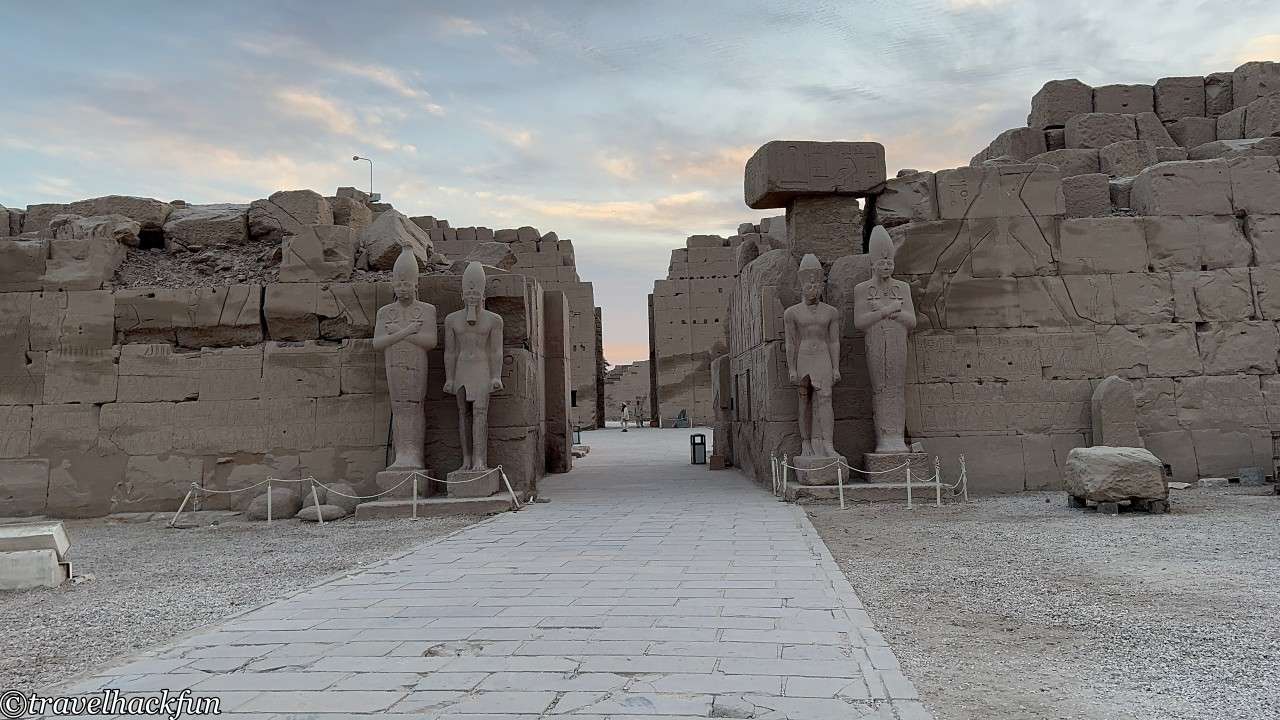
Temple of Amun
The Temple of Amun is the central structure of the entire Karnak Temple complex. Originally constructed during the Middle Kingdom, it was later expanded by Thutmose III. At the heart of the temple is the sanctuary, which once housed the statue of Amun. In ancient times, only pharaohs and high priests were allowed to enter this sacred space. Although the carvings inside are now faint, the outer walls display detailed and magnificent reliefs.
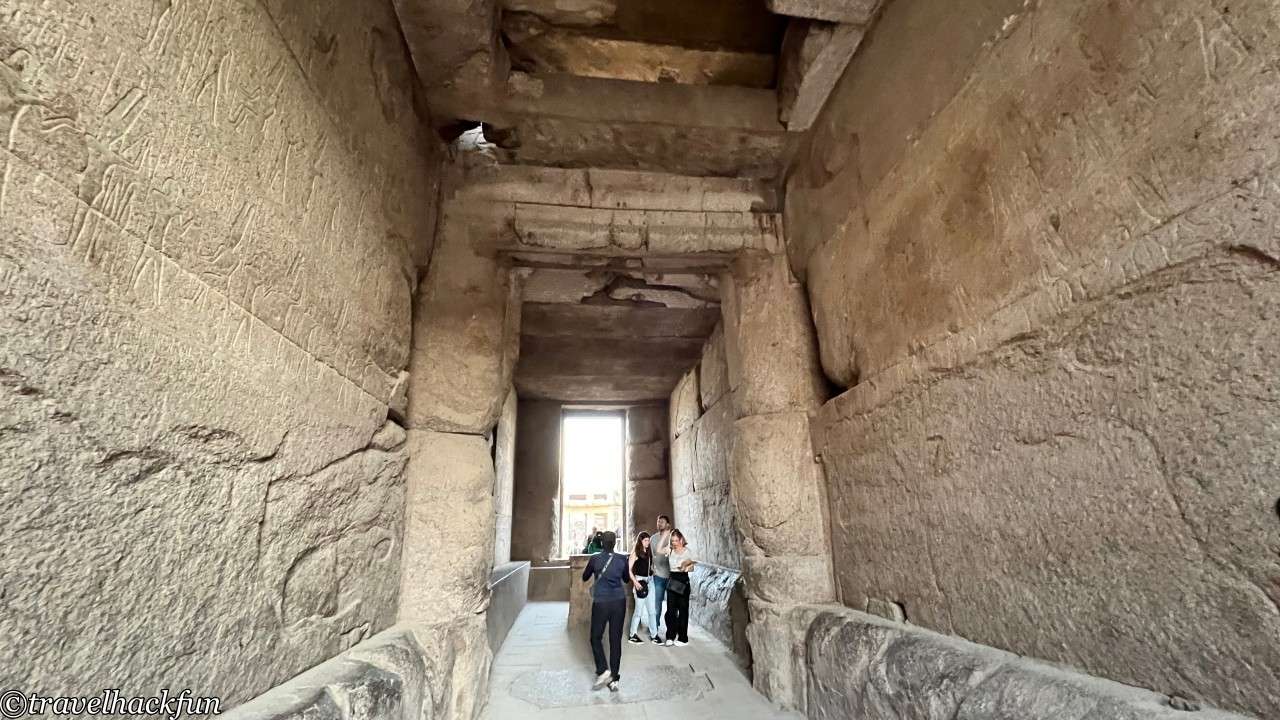
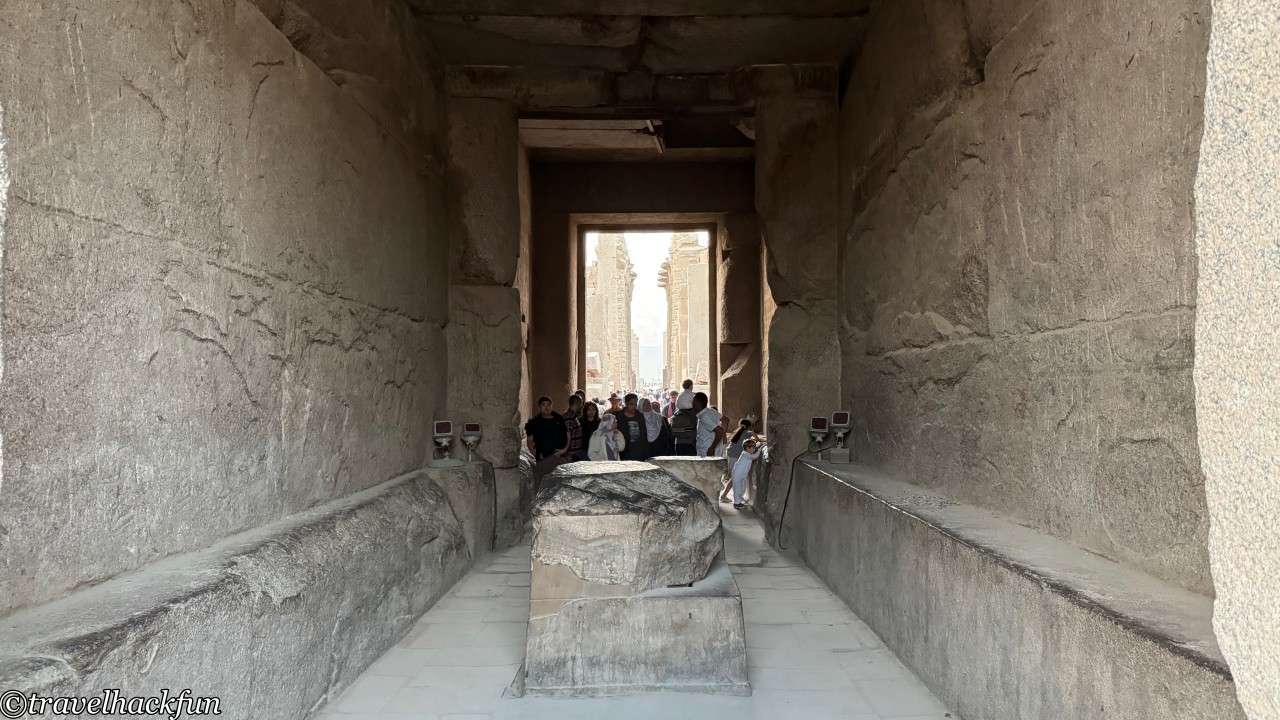
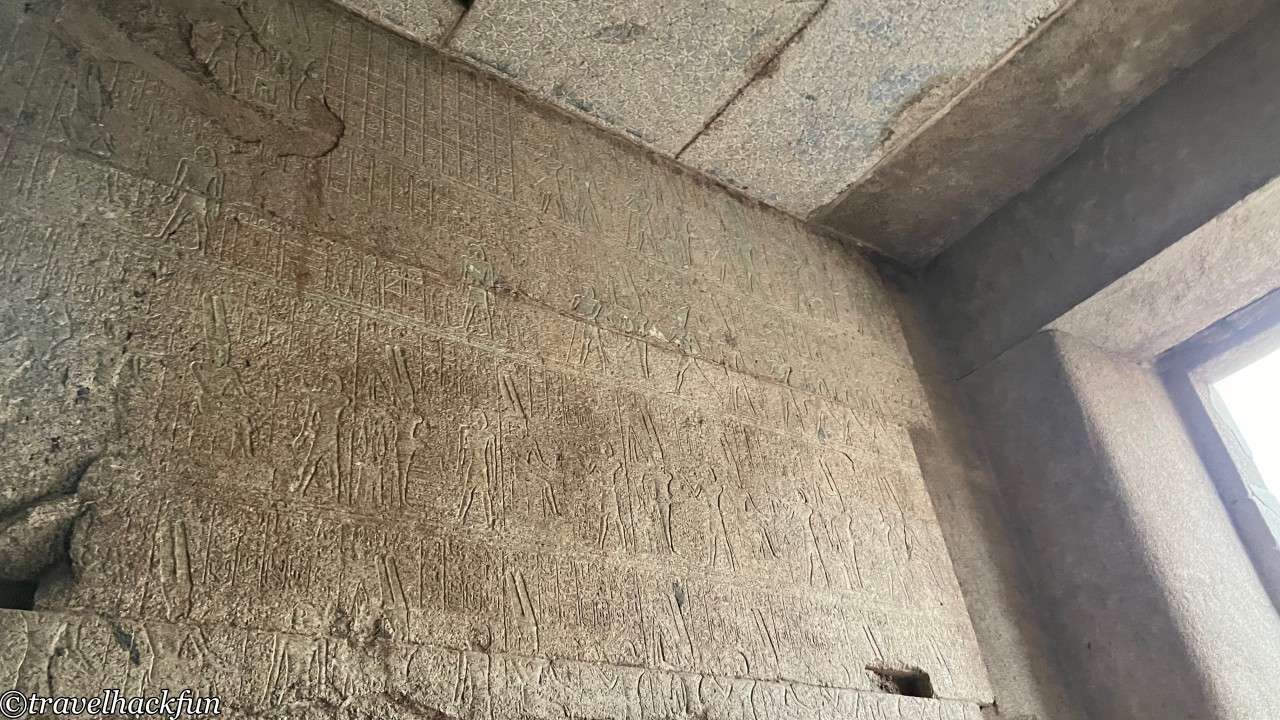
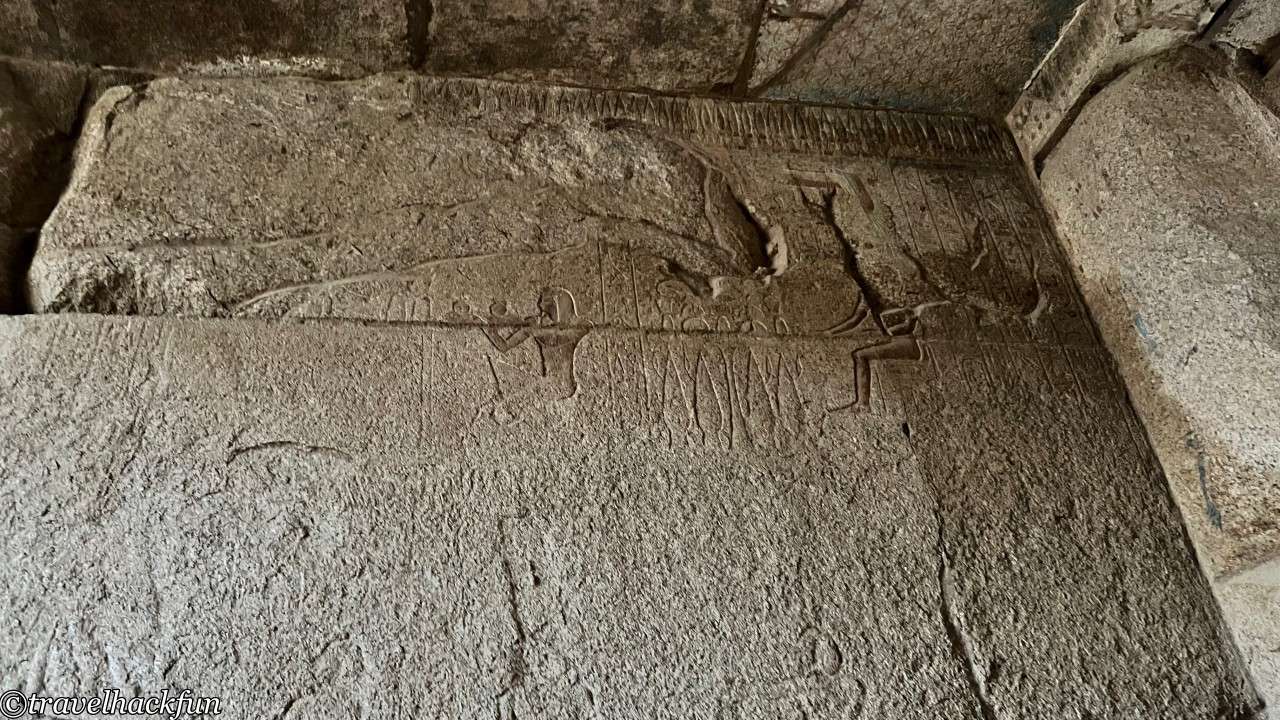
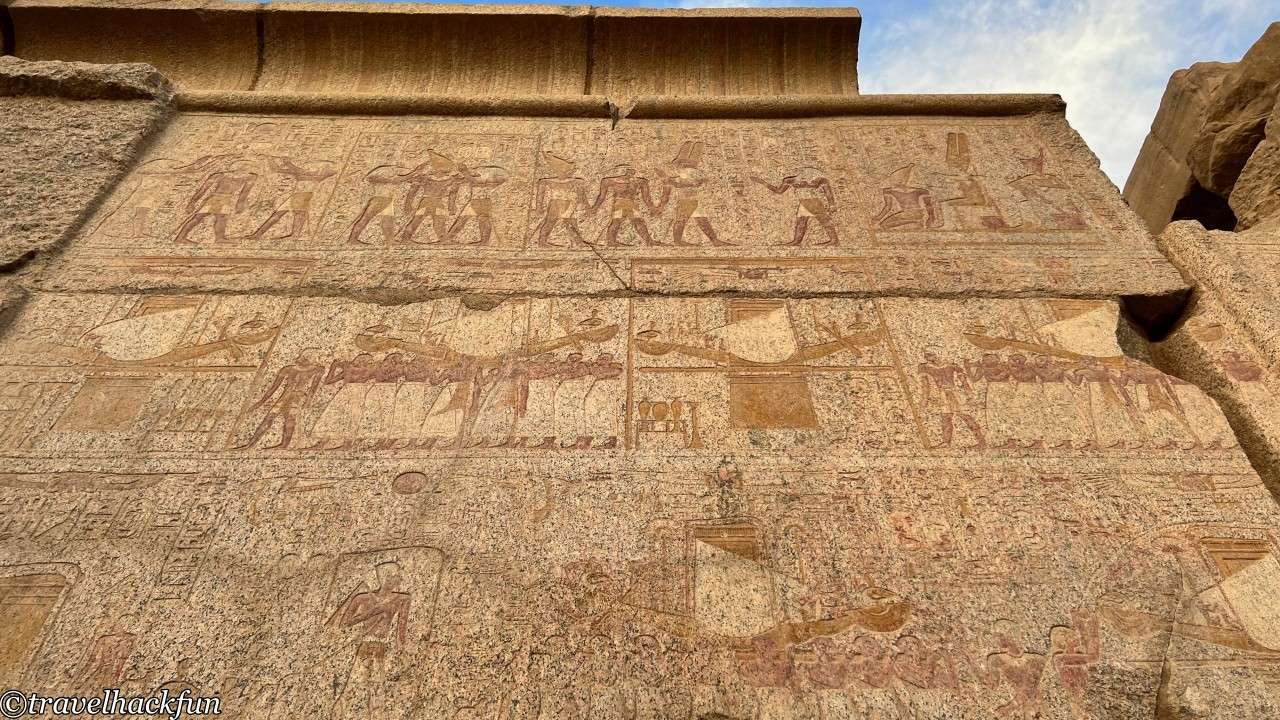
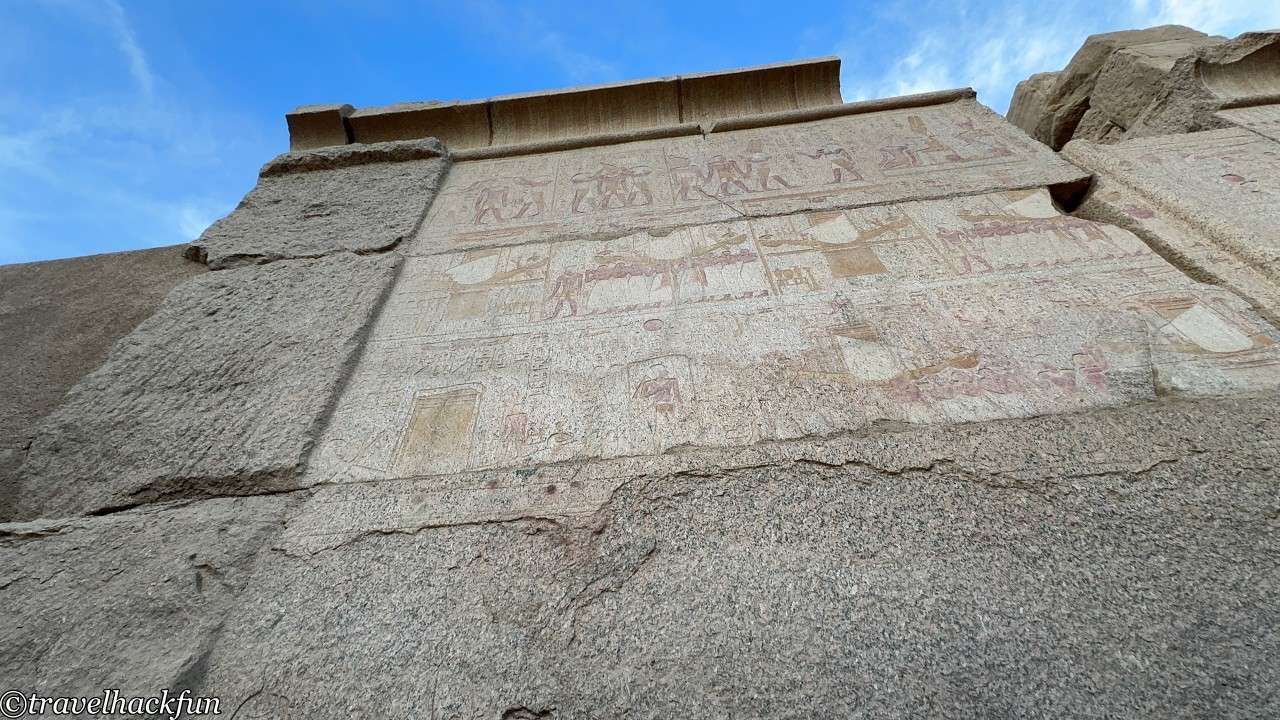
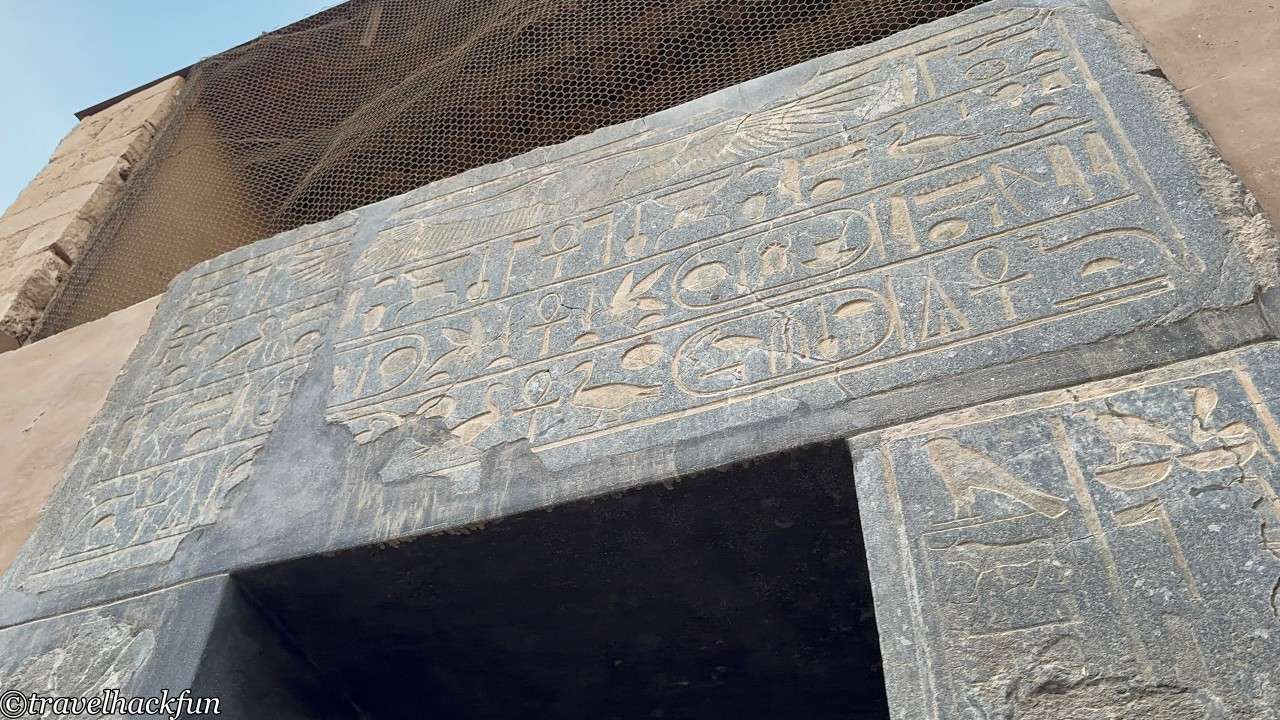
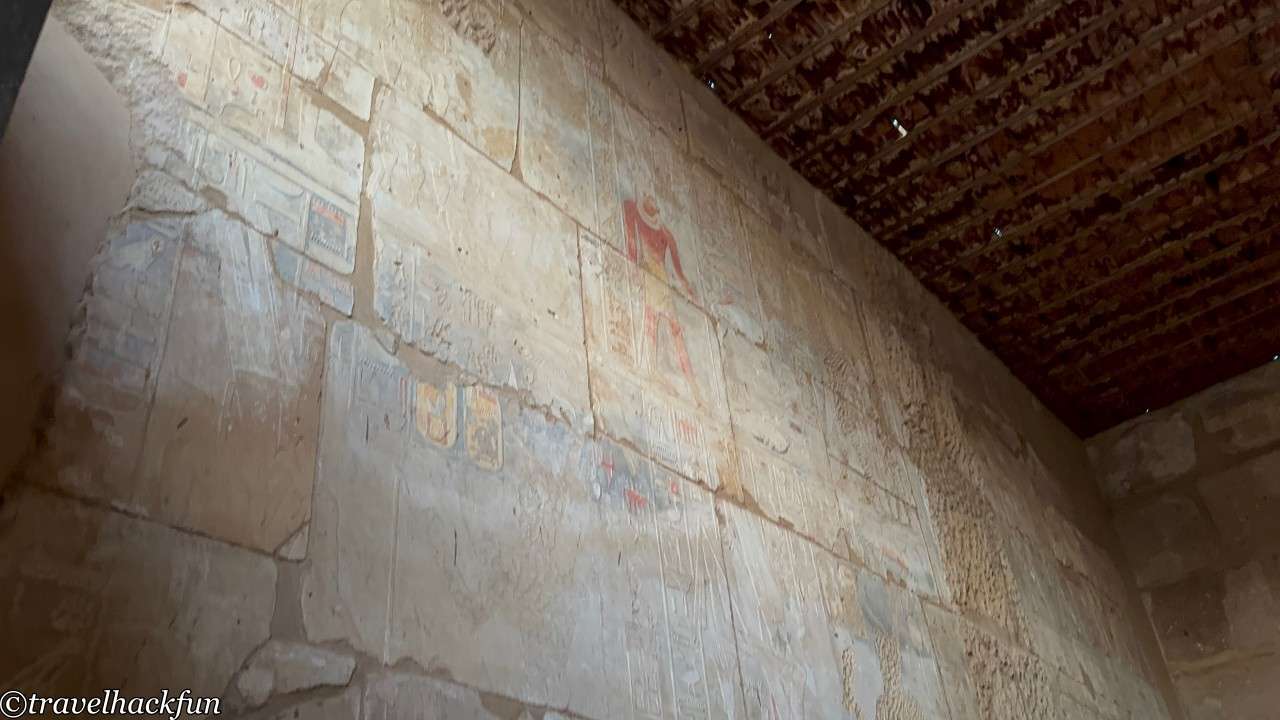
In front of the sanctuary lies the Middle Kingdom Court, the oldest section of Karnak Temple, dating back to the early stages of its construction.
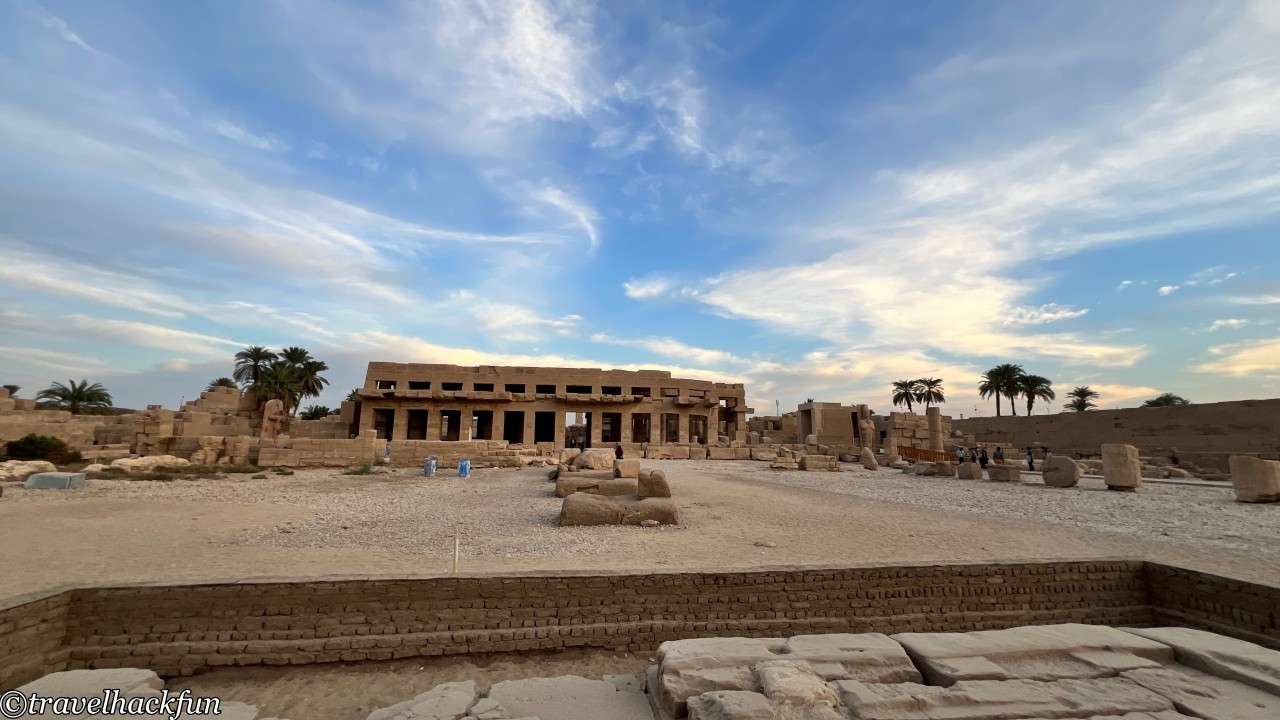
Festival Hall
The Festival Hall, built by Pharaoh Amenhotep III, was used for ceremonial events such as the Opet Festival. Located near the Middle Kingdom Court on the southern side of the temple complex, the hall features rows of stone columns. The column capitals are inspired by papyrus flowers and lotus flowers, symbolizing the unity of Upper and Lower Egypt. The walls and columns are decorated with exquisite reliefs that depict Amenhotep III's accomplishments. The vibrant colors on the carvings remain partially visible, and the ceiling still features traces of star motifs.
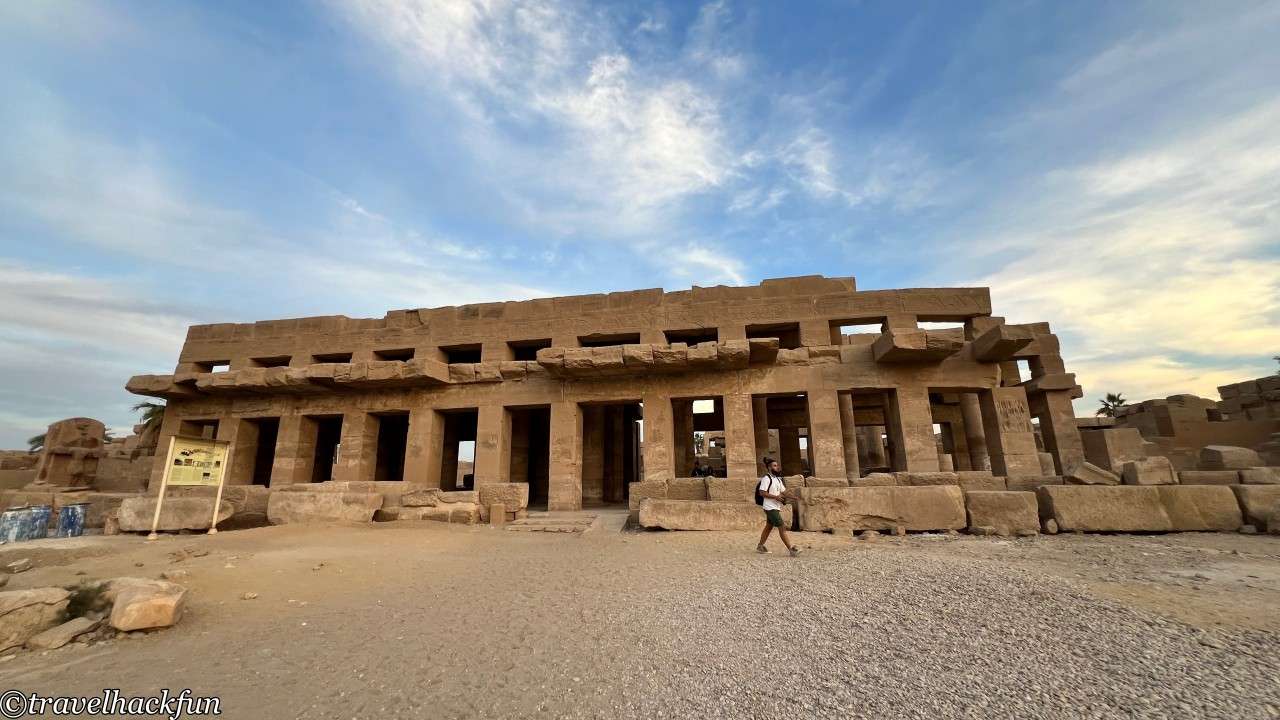
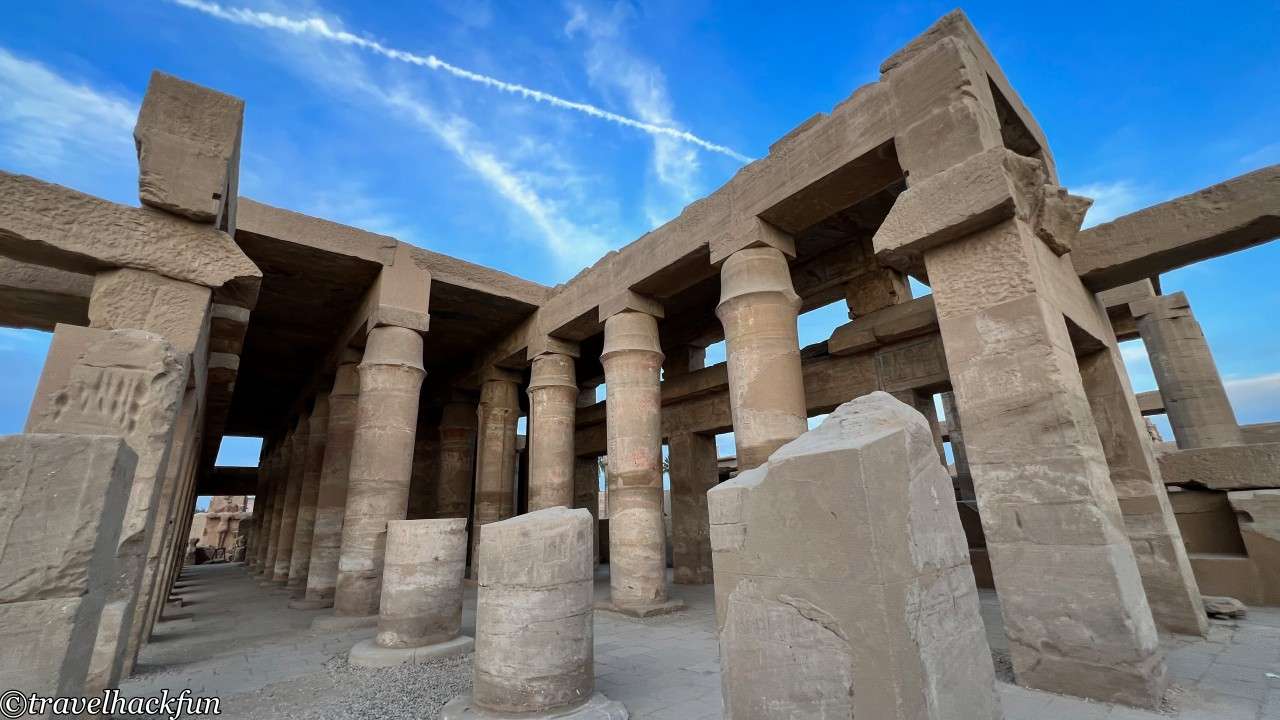
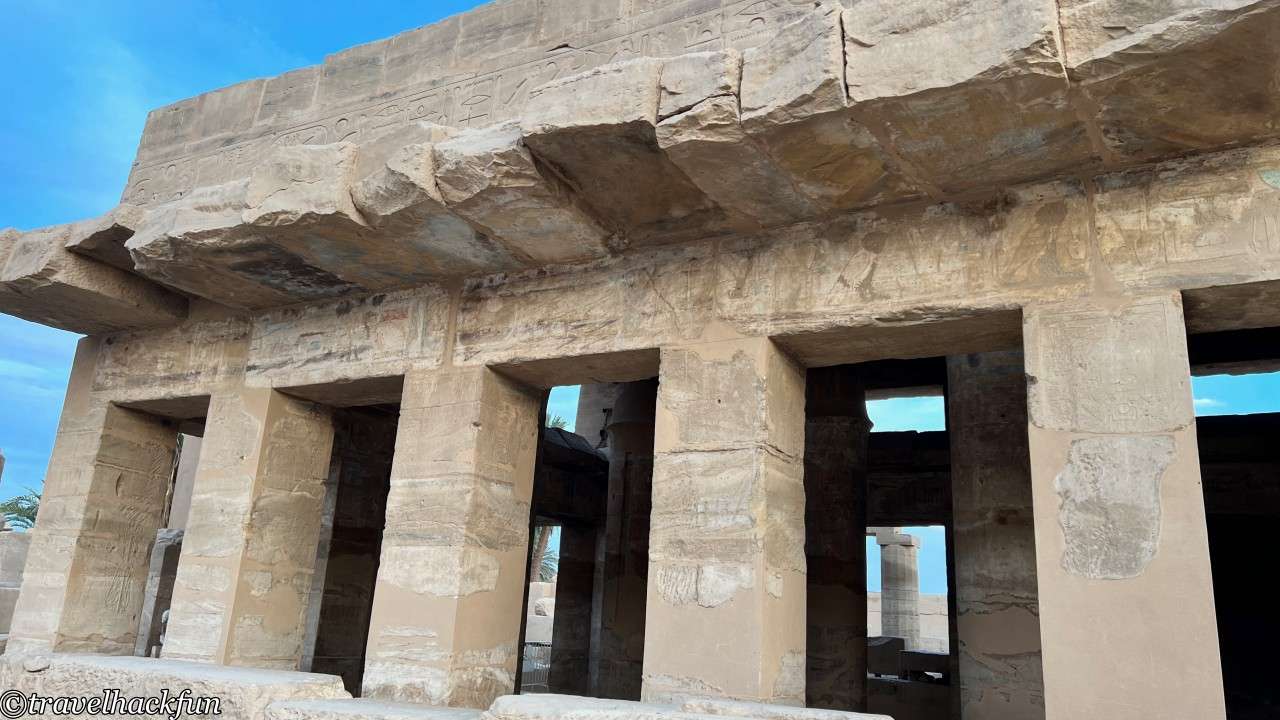
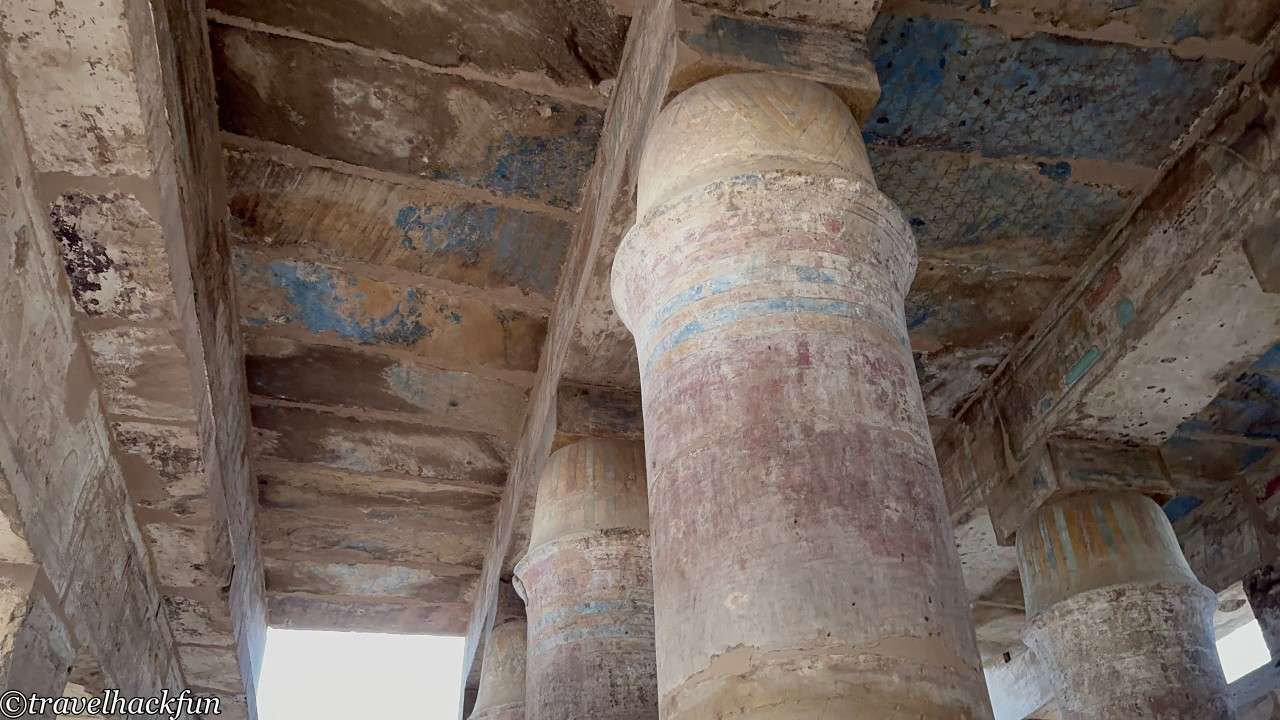
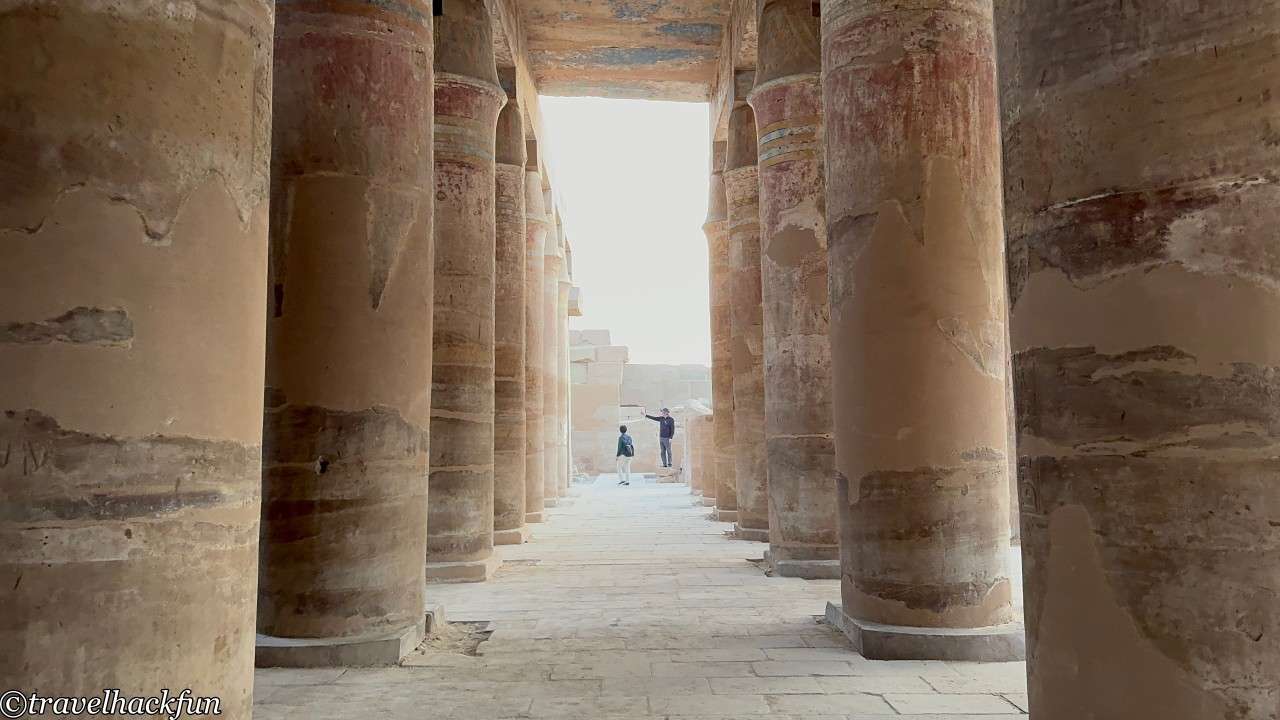
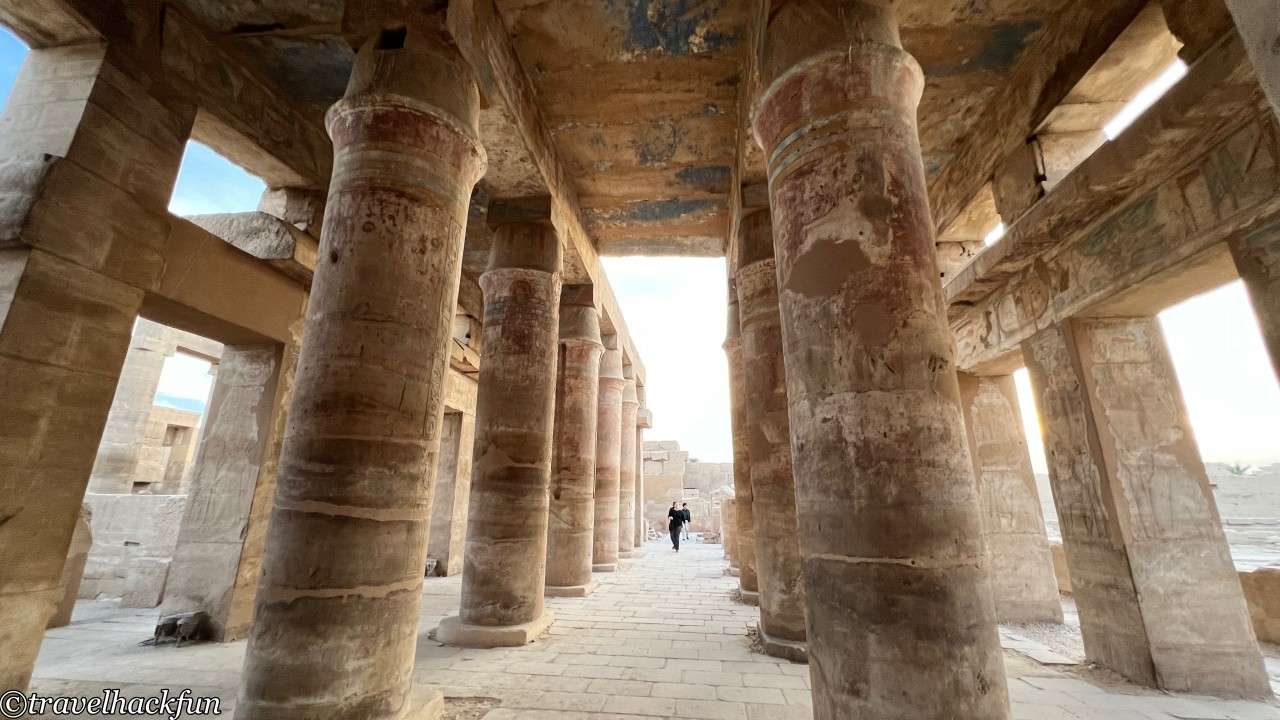
Other Temple Areas
Beyond the main structures, the Karnak Temple complex contains many other temples and buildings worth exploring. These include the Temple of Montu in the northern area, the Temple of Mut to the south, and smaller sanctuaries dedicated to Osiris, Hathor, and others. If you have extra time, it’s worth wandering around these quieter areas. However, visitors should pay attention to signage, as these sections are less crowded and it’s easier to get lost. As a general tip, keep an eye out for the obelisks, which can guide you back to the main temple area.
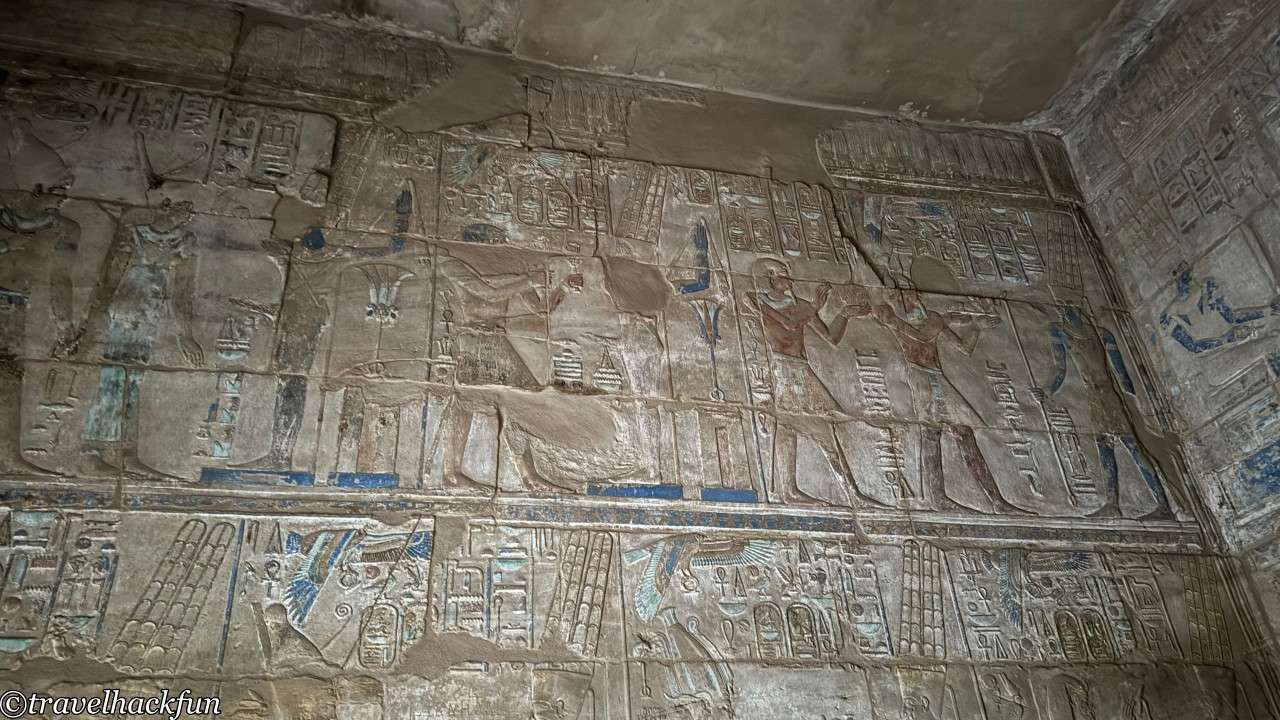
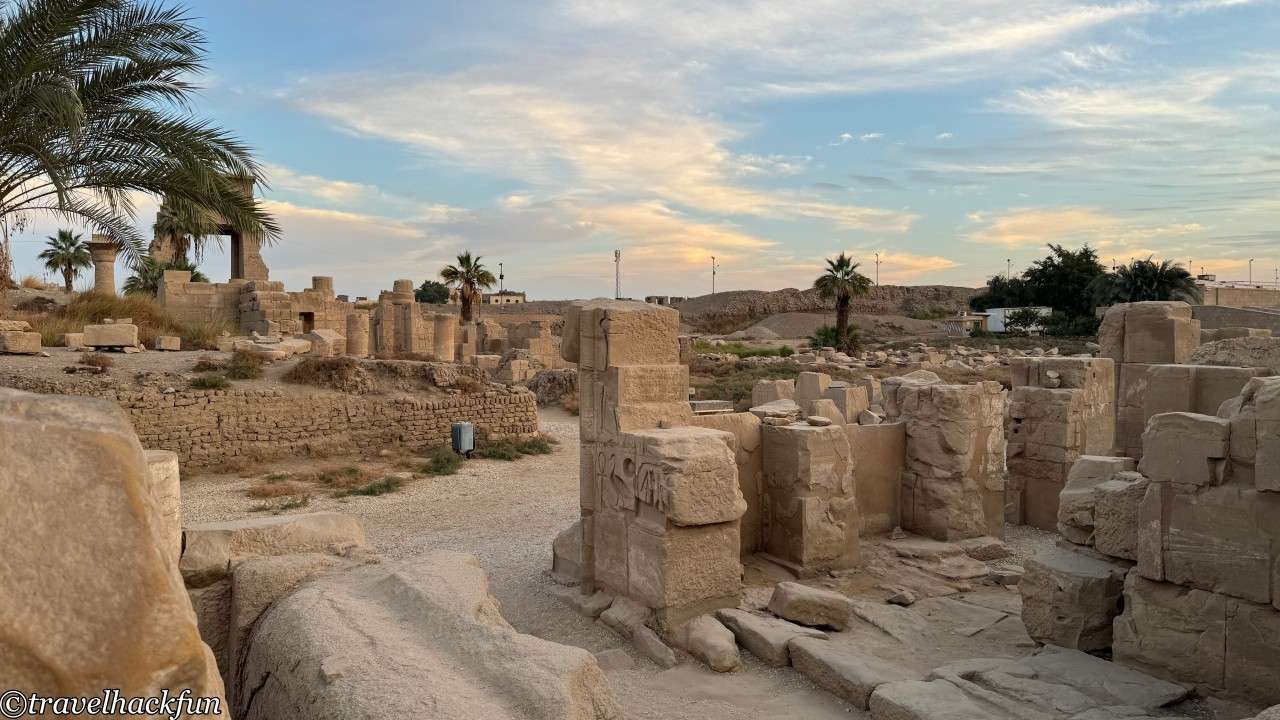
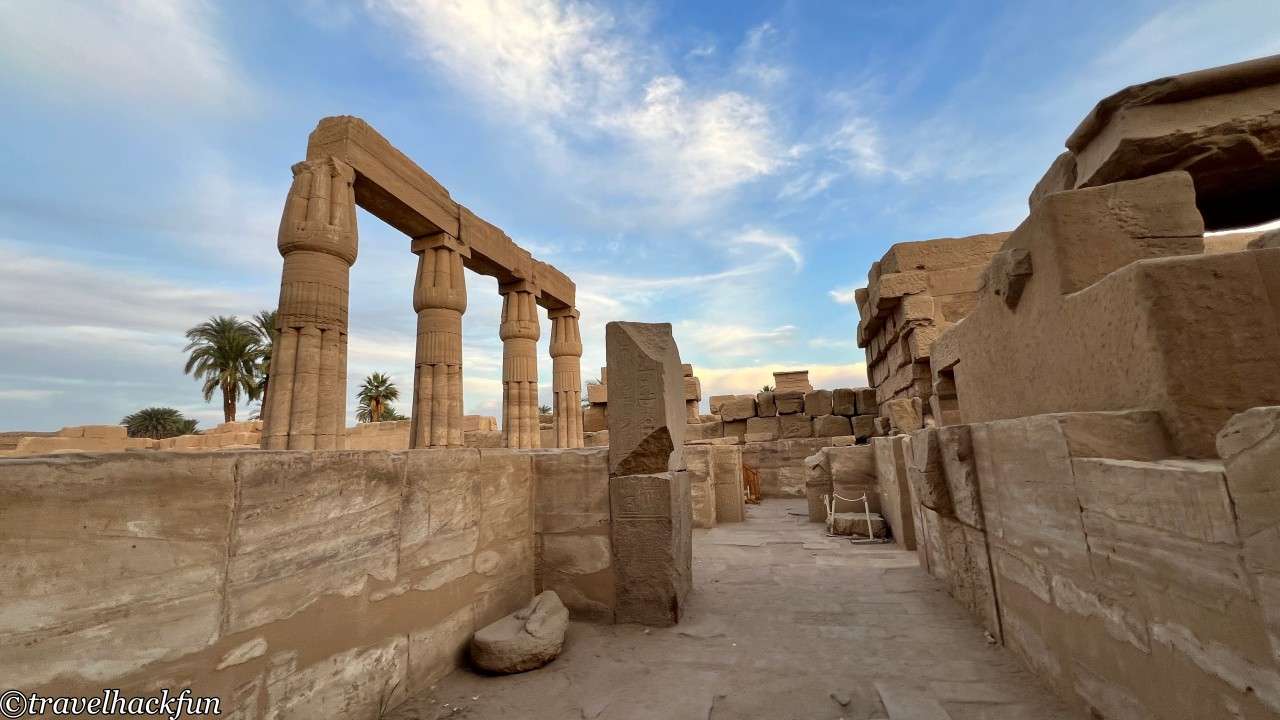
☕ Enjoying my travel notes?
You can Buy me a coffee to support what I do 🙌